Bonhams Announces Asian Art Week with Six Exceptional Sales of Chinese Ceramics and Works of Art
A selection of Chinese ceramics and works of art from the Devotion: Culture, Country and Charity - Chinese Art Sold for the Benefit of a Charitable Foundation. © Bonhams 2001-2023
London – Bonhams celebrates Asian Art Week in London with six exceptional sales of Chinese and Asian ceramics and works of art to include Asian Art, Fine Chinese Art, The Marsh Collection: Art for the Literati (Part II) and Devotion: Culture, Country and Charity - Chinese Art sold for the Benefit of a Charitable Foundation. The auctions, both live and online, will run from 27 October to 7 November.
Asaph Hyman, Global Head of Chinese Ceramics and Works of Art, commented, "As the leading auction house in Europe for Chinese art, and the only one holding bi-annual sales in London, it is a pleasure to celebrate once again Asian Art Week in London with a series of exciting sales featuring extraordinary private collections formed over many decades."
Fine Chinese Art
2 November, New Bond Street
An outstanding selection of Chinese Imperial porcelain, musical instruments, paintings, bronzes, jades, and works of art from important collections from the UK and Europe will feature in the Fine Chinese Art Sale, including an exceptionally rare famille rose 'pomegranate fruits' vase. Two guqins will also be offered, belonging to the sinologist Robert Hans van Gulik (1910-1967) and Cecilia Lindqvist (1932-2021). R.H. van Gulik, former Dutch ambassador to Japan, was famous not just as a musician of the guqin, but also as the writer of the Judge Dee detective fiction series, and scholar of gibbons and erotic art. Cecilia Lindqvist too was one of the few foreigners to study in mainland China in the early 60s with a recommendation from the King of Sweden. A special performance by Dr Cheng Yu playing R.H. van Gulik's guqin along with a performance on the flue by Dennis Lee will be held at Bonhams New Bond Street on Monday 30 October at 6.15pm.
Three works of art, previously exhibited in the important Chinesische Kunst Exhibition of 1929 in Berlin will also be offered. Lot 382, a magnificent and large green jade mythical beast, Qing Dynasty, was loaned by Milly von Friedländer-Fuld to this seminal exhibition, one of the first major exhibitions of Chinese art in Europe. Following the rise of Nazi Germany to power, the mythical beast was seized by the authorities amongst many other works of art and sold in 1941 in the The Hague at Marle & Bignell to a Dutch dealer. It subsequently made its way to the UK and sold through London dealers Spink & Son and Bluett & Sons to a British collector. It is now sold with the agreement of the British collector's family and the heirs of Milly Antonie von Friedländer-Fuld.
A highlight of the sale is one of the most important paintings of luohan of the Qing Dynasty by an Imperial Court artist of the Kangxi period. The remarkable painting of Two Luohan by Xu Conglong (active circa 1700), painted between 1706 and 1712, is a remarkable re-discovery. Of the 200 original paintings, only 113 survive, all in museums. This is the first time this painting is known to have been offered.
Highlights of the sale include:
Lot 329. A very fine and extremely rare Imperial Famille Rose and underglaze-blue decorated 'pomegranate fruits' vase, meiping, Qianlong seal mark and of the period (1736-1795); 16cm high. Estimate: £200,000-300,000 (€230,000 - €340,000). Unsold. © Bonhams 2001-2023
Boldly enamelled in a wide band from just beneath the shoulder to above the foot with two large branches of pomegranates, designed with the left and right hand branches of both trees facing their counterparts, one branch of the pale caramel and grisaille fruit tree curling up to the left and issuing two large pomegranate fruits, boldly coloured in purple-tinged dark red at the top end and pink-spotted lime-green near the stalk, one fruit bursting open to reveal its seeded interior, below two small buds on leafy branches, the leaves delineated variously in turquoise and translucent lime-yellow, the other thinner and shorter branch of the tree curling to the right and issuing one large iron-red blossom in profile beneath three smaller tight buds, the shoulder with a double-iron-red line beneath ten petal-shaped lappets descending from a narrow blue band under the slightly-spreading short neck, the tapering foot with a band of alternate green enamel and underglaze-blue upright stiff leaves above the crisply cut short foot.
Provenance: a British private collection.
Note: This vase is extremely rare with only one other similar vase, Qianlong seal mark and of the period, perhaps the pair to the present lot, which was sold at Christie's Hong Kong, 29 May 2013, lot 2123.
The vase encapsulates the very highest standards of elegance and craftsmanship that existed during the reign of the Qianlong Emperor. The contrasting use of vibrant underglaze blue together with famille rose enamels and iron-red is extremely rare and striking, and the shading on the branches exhibits the influence of Western paintings and chiaroscuro brought by the Italian Jesuit Court painter Giuseppe Castiglione (1688-1766).
Other related vases with similar decoration, but of different sizes also exist. One similar but larger (32.5cm high) famille rose and underglaze blue vase and cover, with very similar decoration, Qianlong seal mark and of the period, is in the Qing Court Collection and illustrated in The Complete Collection of Treasures of the Palace Museum: Porcelains with Cloisonné Enamel Decoration and Famille Rose Decoration, Shenzhen, 2009, p.104, no.90.
The present lot is laden with auspicious meaning and symbolism. The ripe pomegranate, bursting with seeds (zi 籽) which is a homophone for child or son (zi 子) provides the rebus for liukai baizi, 'Pomegranate revealing one hundred sons', or also qianzi tongmo, 'One thousand sons within the same generation'. Beneath the pomegranates are sprigs of bamboo. Bamboo has long been admired as a symbol of the scholar: upright and just, bending with the wind but not breaking, staying green even in the depth of winter, it came to symbolise perseverance and upright honesty. However, together with the pomegranate, bamboo shoots (sun 筍) creates another blessing for zisun wandai, 'May you have numerous descendamts'.
Apart from the seeds however, the fiery red blossoms of the pomegranate are also depicted. On the fifth day of the fifth lunar month (which is considered the most posionous day of the year), women traditionally wore pomegranate blossoms as their red colour was believed to ward off evil. According to an Imperial edict by the Qianlong Emperor in the 8th year of his reign (1743), specific motifs should be used for porcelain on the occasion of different festivals in accordance with Chinese conventions, such as mugwort leaf for the Dragon Boat Festival, orange osmanthus for the Mid-Autumn Festival etc. The pomegranate blossoms on the present vase imply it may have been for the fifth day of the fifth month.
The Qianlong reign was a period when every aspect of a vessel was precisely calculated and planned, down to its minute detail, but at the same time, every object was regarded as a unique work of art. The present vase is a particularly fine and rare example of the exquisite craftsmanship and taste of the Qianlong Court.
Lot 315. A rare and important 'Wu Wing' lacquered and zitan Guqin, late Ming Dynasty (1573-1644); 121cm long. (3). Estimate: £180,000-240,000 (€210,000 - €270,000). Sold for £698,900. © Bonhams 2001-2023
The flat elongated body with two waisted sections on both sides, lacquered black, the surface slightly ice-cracked and worn due to age, the forehead inlaid with a peach-shaped jade plaque of a duck, one edge with thirteen mother-of-pearl-inlaid studs (hui), seven strings threaded through tasselled wooden pegs (qinzhen) running over the top and tied to either of the two button-like wood pegs (yanzu) on the back, with two rectangular openings, the large one termed 'dragon pool' (longchi) and the smaller 'phoenix pond' (fengzhao), the bridge and 'dragon's gums' in zitan, the underside bearing several seals and calligraphic inscriptions, Japanese wood box and cover with inscription by R.H.van Gulik.
Provenance: R.H. van Gulik (1910-1967) acquired in Beijing in 1936, and thence by descent.
Published and Illustrated: R.H.van Gulik, The Lore of the Chinese Lute, 2011 (first published in Tokyo 1940), Bangkok, 2011, p.5, figs.1a-1b.
Note: Robert Hans van Gulik (1910-1967), also known as Gao Luopei (高罗佩) was a famous Dutch diplomat, musician, writer and sinologist. He was a great admirer of traditional Chinese literati culture and apart from practicing Chinese calligraphy everyday (the inscription on the cover of the box on the present lot was written by him), he also learnt to play the guqin, of which the present lot was said to be his favourite instrument. The guqin was often played by van Gulik at diplomatic events, helping him to forge close ties with China's elite. His book The Lore of the Lute was the first academic study of the instrument and its role in Chinese culture, introducing it to a Western audience for the first time. Van Gulik was one of the rare and great European sinologists at the time who embodied the literati ideal and through his rigorous study and translations of classical Chinese texts allowed Chinese culture to speak for itself acting as a bridge of understanding between East and West.
Van Gulik was born in Zutphen in the Netherlands, but from the age of three he lived in Jakarta, with his father who was a medical officer in the Dutch East Indies. While there, he learned Indonesian and Chinese as well as other languages. In 1935, van Gulik earned his PhD from Utrecht University with a dissertation on Hayagriva, the Mantrayanic aspect of Horse-cult in China and Japan. His linguistic skills allowed him to secure a position in the Dutch Foreign Service from 1935 where he was largely based in Japan and China. During the Second World War he was with the Dutch mission in Chongqing. While in Chongqing, he married Shui Shifang (1912-2005), the daughter of a Qing dynasty official.
Van Gulik was a polymath with broad interests and expertise. Aside from his interests in the guqin and traditional Chinese culture, he was a writer of detective fiction. His 'Celebrated Cases of Judge Dee' (first published in Tokyo in 1949, with illustrations by himself) was based on the 7th century statesman and detective Di Renjie. Based on this, he earned a reputation as an expert on Imperial Chinese jurisprudence. His other pioneering scholarly works focused on Chinese sexuality and his Sexual Life in Ancient China and Erotic Colour Prints of the Ming Period are still major reference works in the field. Van Gulik was also an enthusiast of gibbons and kept them as pets as well as writing a study of them: The Gibbon in China.
The Chinese inscription on the cover of the case, written by van Gulik himself, explains the provenance and origin of the name for the present guqin:
古琴雅名指不勝屈。名琴為歷代所寶者。以數十計知音。高士 先審其音而後賦以名。名音相應如鸞應鳳。後世之人不原其道。得琴則臆倣古雅而名之。故名與音舛。余久患之。以為琴學日 滅。丙子秋莫於燕京偶得古琴。其細音鏗鏘如振索鈴。喁喁如 兒女私語。其大音簌簌如風雨驟至。殷殷如震雷響山。豈能輒 狀其玅而限之以名乎。因却多名之溷而名曰無名。丁丑六月荷 蘭高羅佩書於東京公署
Which may be translated as:
The qin of antiquity had countless elegant names. Of all the fabled names that have been treasured down the ages, there exist only a few dozen qin for which we can know their sound. Lofty scholars would bestow a name upon a qin only after having first assessed the instrument's sound. The name and the sound must be in accord with one another, just as are the male and female phoenix.
Later generations have not walked this path. Upon acquiring a qin they use their imagination to imitate the elegance of antiquity to give it a name, which only results in a dissonance between name and sound. This has long been a concern of mine. I believe that the study of the qin is dying out with each passing day. In the late autumn of the Bingzi year (1936) I happened to acquire an antique qin in Yanjing (Beijing). The quiet notes jingle-jangle as if you had stirred a string of bells, whispering as furtive words between a man and a woman. The loud notes rustle as the sudden arrival of rain and the wind, rumbling as thunder echoing throughout the mountains. How could I describe such excellence and how could I presume to limit it with a name? I therefore spurned this quagmire of many names and gave it the name Wuming, Nameless. Written in the Dingchou year (1937) by Gao Luopei (Robert van Gulik) of Holland at the Tokyo legation.
The name of the present musical instrument Wuming (無名), literally 'Nameless', inscribed on the underside of the instrument at the head in green, can be found in the opening lines of the Daodejing (道德經): 'Nameless is the origin of Heaven and Earth' (無名,天地之始). It reflects van Gulik's deep and erudite knowledge not only of the Chinese literati aesthetic of understatement, but also of ancient philosophical texts.
One of the large square seals on the underside reads Jiyizhaiji (集義齋記), 'Seal of the Studio of Collected Righteousness'. Aside from being the seal of van Gulik, being the name of his library and scholar's studio in Tokyo, it was originally the name of the Dutch factory in Canton (Guangzhou), which in the 18th century was called the Jiyi hang (集義行) 'Factory of Collected Righteousness'.
Further below on either side of the sound box is a poetic couplet which reads:
琴聲雖可狀
琴意誰可聽
Which may be translated as:
Though the sounds of the qin may take form
Who can hear what it means
The well-known guqin musician Wu Jinglüe (1907-1987) inscribed these lines from the poem Jiangshang tan qin (江上彈琴) 'On the river playing the qin' by the famous Song dynasty scholar and statesman Ouyang Xiu (1007-1072). The poem likely held some special significance for van Gulik, who had previously used this couplet as the epigraph of his book 'The Lore of the Chinese Lute'.
Furthermore, there is another inscription by van Gulik himself which reads:
中和琴室所藏之琴此為第一
Which may be translated as:
This is the best of all the qin kept in the Zhonghe qin room.
Van Gulik wrote this line as a parallel to an inscription on the qin named Kunshanyu (崑山玉). This qin was owned by Ye Shimeng, the first qin master and teacher of Van Gulik and carried the inscription 'This is the best of all the qin kept in the Shimeng Library'.
Compare with a related lacquered guqin of the same shape, Ming dynasty, illustrated in Zithers of the Forbidden City Classics of the Forbidden city, Beijing, 2010, p.132, no.24; see also another related lacquered guqin, Ming dynasty, illustrated in Ibid., p.114, no.19.
See a related Prince of Lu guqin, dated 1637, which was owned by van Gulik, which was sold at Poly Beijing, 7 June 2021, lot 5187.
We wish to thank Karwin Cheung for the translation of inscriptions on the present lot.
Lot 317. A rare 'crane-cry autumn moon' style lacquered 'hundred-patch' guqin, Ming Dynasty (1368-1644); 122.5cm long. (3). Estimate 30,000-50,000 (€34,000 - €57,000). Sold for £368,700. © Bonhams 2001-2023
Superbly constructed with the top section made of patches of wutong wood cut hexagonally imitating Buddhist patchwork vestments, the lower section of zimu, the flat elongated body with waisted bulbous central section, the top with thirteen inlaid mother-of-pearl studs (hui), seven strings threaded through tasseled wood pegs (qinzhen) running over the top and tied to either of the two button-like 'goose-feet' (yanzu) on the back, with two rectangular openings, the large one termed 'dragon pool' (longchi), with a seal, and the smaller 'phoenix pond' (fengzhao), all covered in mottled red and black lacquer, metal case and packets of strings.
Provenance: Cecilia Lindqvist (1932-2021), Stockholm, acquired in Beijing in 1962.
Published and Illustrated: C.Lindqvist, Qin, Beijing, 2017, p.33.
Note: Cecilia Lindqvist was a famous Swedish sinologist and musician of the guqin. She was born in Lund, Sweden, in 1932, and had long held a fascination with China and its ancient history. She first visited China when she was 28 with letters of recommendation including one from the King of Sweden. It was there that she learnt to play the guqin in 'Beijing Guqin Research Association' (北京古琴研究會) under the tutelage of Wang Di. She wrote in the preface to her book Qin:
In the early spring of 1961 I saw a Chinese qin at close quarters for the first time. It was lying in front of me on a wooden table in a bare classroom at the University of Peking. Seven strings of tightly twisted silk stretched over a sound box made of black lacquered wood. After a certain amount of difficulty I had managed to get hold of a Chinese student who had promised to try to teach me the basics of playing the qin, and we were due to have our first lesson. He had brought his instrument with him. It dated from the Ming dynasty (1368-1644), and had been passed down through his family since that time.
When I touched one of the strings, the tone that was released made the whole room vibrate. It was as clear as silver, but remarkably it also had a kind of metallic dullness, as if the instrument were made not of wood, but of bronze. During the years which followed it was precisely the tone of the instrument that captivated me the most, from the finest bell-like tones or fanyin, 'the floating sounds' as they are called in Chinese – delicate as the sound of the tiny temple bells right on the edge of the roof timbers when the wind gently stirs them – to the vibrating depths of the thick bass strings.
The present lot was given to her by the 'Beijing Guqin Research Association' as a gift, which was of great significance to her career as a musician and sinologist. In her own words, 'this qin, and the people that I met in the Beijing Guqin Research Association are the important reasons why I write this book (Qin)'. She included the present lot in her monograph on qin as an example of the 'hundred-patch' qin (百衲琴) that is made of many hexagonal wutong wood sections and requires a high level of adhesive technique to enable an impeccable sound. See Cecilia Lindqvist, Qin, Beijing, 2017, pp.30-33. Apart from the rare 'hundred-patch' construction, its rare shape is known as 'Crane-cry Autumn Moon' (鶴鳴秋月), as it was said to resemble a crane with its wings tucked and standing upright.
Compare with a related 'crane-cry Autumn Moon' style guqin, Ming dynasty, in the Hunan Provincial Museum, cited in 'Hunan sheng bowuguan guancang guqin zhi kaobian yu yanjiu (zai xu), Hunan sheng bowuguan guankan, 4, 2007, pp.424-428.
See a 'Confucius-style' huanghuali and zitan 'hundred-patch' guqin, Ming dynasty, which was sold at Bonhams Hong Kong, 1 December 2020, lot 13.
Lot 314. A remarkable painting by Xu Conglong (c.1700), Two Luohan, painted between 1706 and 1712, Kangxi period, ink and colour on paper, 281cm high x 128cm (50 1/4in) wide. Estimate: £80,000-120,000. Unsold. © Bonhams 2001-2023
depicting two luohan in a mountainous landscape framed by rocks to the side and below, dressed in dramatic red and white robes, with two seals of the artist reading bing wu huishi qian guan and Xu Conglong yin, one by Jin Shiyang, commissioner of the work reading Zheng shi si jinshiyang tie shan shi juanzi zhi, one of the Lushan temple Lushan qi xian si yongyuan gongfeng and two collectors seals, Jing pi xuan wan pin and wan cheng zhen tong jiaozheng, partially mounted, framed and glazed.
Provenance: the celebrated American portrait painter Dewitt McClellan Lockman (1870-1957), acquired from his estate in the 1980s, by repute.
Lockman had travelled to Europe in 1892 and again in 1902, and served at the Office of Naval Intelligence from 1917 to 1918. He was a member of numerous artistic societies, and his works are owned by institutions including The Metropolitan Museum of Art, New York.
Note: The long and illustrious tradition of Luohan, or Arhat, painting in China can be traced even before its Imperial sponsorship by the Song Emperor Taizong. Through successive dynasties, pre-eminent artists including Liu Songnian, Zhao Mengfu, Cheng Hongshou and Shi Tao, have been drawn to this subject matter. Luohan are generally presented in groups of sixteen, eighteen or five hundred and are often depicted as monks or ascetics. Whilst no Buddhist text gives the names of all five hundred luohan, the Lotus Sutra mentions five hundred disciples of the Buddha who, it appears, form the basis of the 'five hundred luohan' tradition. Their exaggerated features and sheer multiplicity demonstrate creative freedom and experimentation, making them the chosen subject matter for some of the very finest Chinese figurative and Buddhist art.
In the works of Xu Conglong we arguably find the apotheosis of the genre. Both in scale and expressive character, his works are unsurpassed. His two hundred monumental paintings together depict five hundred Arhats. These were completed in the six-year period between 1706 and 1712 by the sole hand of the Kangxi Court artist. Each work measures an impressive 274 x 125cm meaning the five hundred luohan of Xu Conglong together occupy a combined surface area of 688 square metres.
Previous depictions of the five hundred luohan in Chinese art appeared in three forms. First, across multiple leaves in a small-scale album, presented together in a continuous horizontal format to be gradually revealed section by section. Second, in the form of a hand scroll. Third, in the form of mural paintings such as the five hundred luohans in Foguang temple in Wutaishan painted in the Xuande period, 1430, and repainted during the reign of Hongzhi.
The arrangement of Xu Conglong's large-scale vertical paintings, combined to depict the five hundred luohans, builds on these three existing formats to create something unique, completely unprecedented and never again repeated in the history of Chinese painting. It is remarkable that the complete set is the product of one individual artist, thereby embodying one man's artistic vision from conception through to execution. The works' designation as a Chinese National Treasure of the First Grade attests further to their status as the foremost masterpiece of Chinese Buddhist painting of the Qing period. The influence of the works beyond China is clear in the set of one hundred paintings of the five hundred luohan completed by the Japanese artist Kano Kazunobu (1816-1863) which was commissioned by the Zojo-ji Temple and painted between 1854 and 1863.
Considering the importance of Xu in the history of Classical Chinese Painting, relatively little is known about his life. However, it has been established that he was a native of Jiashan in Zhejiang Province and lived to the age of 80. In 1706 he took the Kangxi Bingxu examinations and was recommended to serve in the Nanxun Palace. He served in the Imperial Court, with access to the Imperial painting collection where he also gained access to Western painting techniques and to Yuan dynasty paintings, both of which influenced his output. Two of his works in the Imperial collection are preserved in the Palace Museum, Beijing, one of a goatherd with three goats and a hand scroll depicting the five hundred luohan. Another work depicting luohan, Longgong fu zhai tu, is in the Nanjing Museum. Paintings from the set of which the present lot is part were lent to the Palace Museum, Beijing, for a temporary exhibition in the East Hall of the Forbidden City in 1991.
The two hundred luohan paintings were originally commissioned by the provincial governor Jin Shiyang. On its completion the set was exhibited in Youqing Temple to critical and popular acclaim with tens of thousands of visitors attending. In April 1712 it was moved to Youmin Temple for the Bathing Buddha Festival, after which it was transported to Qixian Temple, on mount Lushan in Jiangxi Province.
The value of the work is further underpinned by the tumultuous history of its survival. From the outset it was subject to numerous threats. There was a series of fires at the Qixian Temple before it was finally destroyed by soldiers in 1850.
Of the original 200 paintings comprising the set, almost half have been lost, their locations unknown, and all known remaining works are currently housed within institutions: 112 in the Lushan Museum and one in the Nanjing Museum. None of the missing works have been recovered and the discovery of the present work is unprecedented in the modern history of Chinese Buddhist art. Whilst many of the surviving works are in very poor condition with large sections of the surface missing, the present work has been preserved almost entirely intact.
In 1918 when the scholar official Kang Youwei (1858-1927) visited the paintings he recorded only 120 remaining. He added his seals to each of these and wrote an inscription to one painting. The present work does not contain either of the two seals of Kang Youwei found on the known extant works (維新百日出亡十六年三周大地遊徧四洲經三十一國行六十萬里 and 康有為印). This provides a strong indication that the work has been separated from the collection of paintings prior to 1918.
In total the painting contains six seals. Two are seals of the artist to the upper left (丙戊會試謙官、許從龍印) and a large seal of the provincial governor Jin Shiyang, who commissioned the works, in the centre of the painting (政使司金世揚銕山氏捐资製). The seal 廬山棲賢寺永遠供奉 to the centre left and two collector's seals 徑甓軒貦品 and 萬承鎮同校正 respectively in the bottom left and right corners, all date to the point at which the painting was first created.
Stylistically, these works by Xu Conglong are situated centrally within the canon of luohan painting with many of the compositions drawing directly on the album of luohan paintings of Shi Tao, who himself drew inspiration from Wu Bin and Ding Yunpeng. The works are innovative in the way that they reflect human feeling not only in the expressions of the luohan but in the animals, the brushwork and the composition of the landscape elements of the paintings. This draws, to some extent, on the conventions of Yuan dynasty painting. However, transformed into such monumental scale and scope, the works evoke awe and wonder in the viewer fitting for the religious subject matter.
Lot 382. A magnificent and large green jade mythical beast, Qing Dynasty (1644-1911); 32cm long; 8550g. Estimate: £6,000-8,000 (€6,900 - €9,200). Sold for £32,000. © Bonhams 2001-2023
The imposing animal carved recumbent with large bulbous eyes beneath bushy brows, a wide mischievous grin revealing fangs, the accentuated spine terminating with the large bushy tail sweeping across its left haunch, its paws neatly tucked beneath the large body, the stone of mottled dark olive-green tone with russet veins.
Provenance: Milly von Friedländer-Fuld (1866-1943), Berlin (this lot is sold with the permission of the heirs of Milly von Friedländer-Fuld)
Auktion Van Marle & Bignell, The Hague, 20-25 October 1941, lot 1384
Kunsthandel v.Veen, Amsterdam
Spink and Son Ltd., London
Bluett and Sons Ltd., London, 15 November 1984
A British private collection, and thence by descent.
Published, Illustrated and Exhibited: Chinesische Kunst, Berlin, 1929, p.394, no.1086
Somerset House, 1979.
Note: Milly Antonie von Friedländer-Fuld was born in the Netherlands in 1866, the daughter of the banker Elias Jacob Fuld and his wife Lina. Her father, a native of Frankfurt, ran the Amsterdam bank Becker & Fuld together with Carl Becker, which maintained close ties with the Rothschild Bank in Frankfurt. According to a list from 1913, the family was one of the wealthiest families in Germany. The family's town house on Pariser Platz was furnished in a manner befitting its status and contained a constantly growing art collection, which was later to include paintings by van Gogh, Picasso, Gauguin, but also by French Impressionists such as Manet and Monet, which belonged to her daughter Marie-Anne von Goldschmidt-Rothschild. Milly's husband, Fritz von Friedländer-Fuld was known for his collection of gold and silver objects, such as rare boxes, nécessaires, flacons and watches, parts of which he had exhibited in Berlin in 1906.
The present lot was loaned by Milly von Friedländer-Fuld and exhibited in the seminal Chinesische Kunst exhibition of 1929 in Berlin. This exhibition was amongst the first major exhibitions of Chinese art in Europe. It included 1270 works of art, on loan from some of the greatest museums such as the Asian Art Museum in Berlin, the Louvre and Guimet in Paris, the Rijksmsueum in Amsterdam, the National Museum in Stockholm, as well from some of the leading collectors and dealers such Adoplhe Stoclet, George Eumorfopoulos and C.T. Loo, to name a few.
After her husband's death in 1917, Milly Antonie von Friedländer-Fuld initially moved to the Netherlands and France. However, the palace and its inventory remained in the family and was used by her as well as her daughter Marie-Anne von Goldschmidt-Rothschild and her family, who still resided there in June 1938. Following Hitler's rise to power, the palace was forcibly sold to Albert Speer, on behalf of the German Reich, and much of the family's property was seized. In August 1939 ten trucks left Berlin with inventory and art objects to Amsterdam for storage at De Gruyter & Co. - likely also including the present lot. These were later seized as well and similarly to the fate of the objects in Palais Friedländer in Berlin, were sold at auction between 1941 and 1942.
After the occupation of the Netherlands by the Germans, Milly Antonie von Friedländer-Fuld fled to France, and died in Cannes in 1943. The jade mythical beast which was sold in The Hague at Marle & Bignell in October 1941 to a Dutch dealer, made its way to the UK and sold through London dealers Spink & Son and Bluett's & Sons to a British collector. It is now sold with the agreement of the British collector's family and the heirs of Milly Antonie von Friedländer-Fuld.
The present lot is remarkable for its extremely large size (32cm long) and weight (8.55kg) and anthropomorphic face. Large jade animal carvings include both animals and mythical beasts; the former such as water buffaloes, horses and elephants and the latter, mythical creatures such as Buddhist lions, qilin and luduan. See for example S.C.Nott, Chinese Jade Throughout the Ages, London, 1975, pls.241, 391, 392, 394, 395 and 397. See also a pale green and russet jade carving of a bixie, Ming dynasty, with closely related humanoid face, which was sold at Bonhams London, 17 May 2012, lot 25.
It is extremely rare to find animals and beasts of such striking size, and although widely published and much admired, exceptionally large jade animals such as the present lot, in fact, form a very select and unusual group within the tradition of Chinese jade carving. Usually carved with great sensitivity and naturalness, such pieces have been traditionally dated to the late Ming to early Qing period, based upon a number of factors: the similar mid-green or occasionally greyish colour of the pieces suggest that they were sourced before the quelling of Xinjiang in 1759 gave access to fine and large raw jades sent in as tribute from the new vassal region. See a large jade figure of a horse, late Ming/early Qing dynasty, illustrated by J.Rawson, Chinese Jade from the Neolithic to the Qing, London, 1995, pl.26:20, and also a large jade buffalo, late Ming or Qing dynasty, illustrated in Ibid, pl.26:19.
The Marsh Collection: Art for the Literati (Part II)
Live sale: 2 November, New Bond Street
Online-only sale: 27 October – 6 November (All Lots Sold at No Reserve)
An exceptional collection of brushpots and other vessels and paraphernalia made for the scholar's desk from the late Ming to the Qing Dynasty will be offered at New Bond Street on 2 November. An online-only sale will also run from 27 October to 6 November. All lots offered in the online-only sale will be sold without reserve.
The Marsh Collection was put together over a period of 40 years by Sam Marsh and his wife Marion who started collecting when they moved to Hong Kong in 1970. They were advised by their friend, the noted collector and dealer Adrian Joseph, and with his encouragement began collecting. Over the years they shared their knowledge with fellow collectors, the late Sir Michael Butler, and John and Julia Curtis, which resulted in them forming an exceptional collection. A scholar in his own right, Sam Marsh is the author of Brushpots: A Collector's View, which features several of the pieces offered with Bonhams.
Highlights of the sale include:
Lot 8. An exceptionally rare and important inscribed blue and white and copper-red 'virtuous officials' brushpot, bitong, Kangxi six-character mark and of the period (1662-1722); 19.1cm diam. Estimate £250,000-350,000 (€290,000 - €400,000). © Bonhams 2001-2023
Expertly potted of cylindrical form with straight sides inscribed around the exterior in kaishu calligraphy with the prose-poem 'The Wise Emperor has Worthy Officials', a seal in underglaze copper-red reading Xi chao chuan gu, 'antique to be handed down from our glorious dynasty', the small recessed base with the mark in underglaze blue.
Provenance: Sotheby's Hong Kong, 30 April 1996, lot 457
Published and Illustrated: S.Marsh, Brushpots: A Collector's View, Hong Kong, 2020, pp.126-127.
Note: The poem on the present lot is 'The Wise Emperor has Worthy Officials' (聖主得賢臣頌) by the Western Han dynasty poet Wang Bao (王褒, 84-53 BC) for the Han Emperor Xuan (74-48 BC). The Han dynasty under Emperor Xuan prospered economically and militarily to become a regional superpower. Emperor Xuan was considered a diligent and brilliant ruler by historians. Unusually, despite his noble birth as a prince, because his grandfather was framed for witchcraft against Emperor Wu and committed suicide after being forced into a failed uprising, the young Emperor Xuan survived the tumult and lived as a commoner after an amnesty from Emperor Wu in 87 BC. His understanding of life as a commoner made him more sympathetic and humane as a ruler, and he lowered taxes, and employed many capable officials. Wang Bao's prose-poem on the present brushpot, therefore, was not just the usual flattery offered to Royalty, but genuine praise. Some sections can be translated as follows:
賢人君子,亦聖王之所以易海內也。是以嘔喻受之,開寬裕之路,以延天下之英俊也。夫竭智附賢者,必建仁策;索人求士者,必樹伯跡... 由此觀之,君人者勤於求賢而逸於得人。
Sage and gentlemen are also a sharp tool for a wise emperor to govern the country. Therefore, to accept talented people with an open mind would only aid in the country's best interest. Knowing this truth, you should establish a strategy for recruiting talents. Recruiting talents from all over the country is a necessary procedure for becoming a hegemon... As a king, only by making painstaking visits to talents in advance can he enjoy the long-term peace and stability brought by talents.
故世平主聖,俊乂將自至,若堯舜禹湯文武之君,獲稷契皋陶伊尹呂望之臣,明明在朝,穆穆列布,聚精會神,相得益章。
When the world is peaceful and the emperor is sage, talented people will show up. Just like 'Yao, Shun, Yu, Tang, Wen, and Wu' and 'Ji, Qi, Gaotao, Yiyin, and Lu Wang', the names of sage emperors and loyal ministers throughout the dynasties are too many to count. There is a diligent king above, and respectful ministers below. They work together and bring out the best in each other.
故聖主必待賢臣而弘功業,俊士亦俟明主以顯其德。上下俱欲,懽然交欣,千載一會,論說無疑。
Therefore, a wise ruler must rely on the help of virtuous ministers to expand his achievements, and the talents must rely on the appreciation of their wise master to fully unleash his potentials and virtues. Harmony between monarchs and ministers is rare in a thousand years. They trust each other and appreciate each other, like a feather following the wind, like a fish in water, how can it be possible to not let it happen? This harmonious ruling style will surely bring auspiciousness and far-reaching influence to all over the country, benefiting the people with its boundless effect.
The Kangxi Emperor clearly thus wanted to link his reign - which began shakily with the Revolt of the Three Feudatories (1673-1681) - with invoking the glorious Han dynasty and the reign of the Emperor Xuan. This is significant because the Han dynasty, which lends its name to the Han Chinese ethnic group, was also a time of stability and prosperity giving rise to Han rhapsodies and grandiloquent prose-poems praising the emperors. The Kangxi Emperor, a Manchu, aware of his perceived 'foreignness', needed to show himself as the custodian of Han culture and civilisation and thus win over scholars and gentry still reluctant to support the Qing dynasty. There were scholars such as Zhang Dai who still looked back longingly to the Ming dynasty as late as 1684. The present lot therefore, with a Han prose-poem, not only exhibits the erudition of the Kangxi Emperor, but his role as custodian of Han civilisation, and his appreciation of Confucian scholars whom he needed to help administer the empire justly.
In 1682, during his second pageantry tour to Manchuria, to make offerings to his ancestral tombs, the Kangxi Emperor often stressed his desire to search for talented officials:
朕禦極以來,恆念山林藪澤必有隱伏沉淪之士,屢詔徵求,多方甄錄,用期野無遺佚,庶愜愛育人材之意
Regarding the concealed and dejected scholars who must be hiding in forested mountains or marshes in the realm. Repeatedly I have issued edicts to recruit them, enlisting their services from all directions, with the intention that no talent will be left unappreciated in the fields.
Written after the rebellion of the Three Feudatories (1673-1681) which was the last substantive threat to Manchu Qing rule, the Kangxi Emperor's reiteration of his daily intimacy with 'literature and ink' (俾日親文墨) and appeal to hidden talent in the marshes is a victor's gesture of benevolent reconciliation.
See a very similar blue and white and copper-red brushpot, Kangxi, with the same inscription, in the Qing Court Collection, illustrated in The Complete Collection of Treasures of the Palace Museum: Blue and White Porcelain with Underglazed Red (III), Hong Kong, 2000, p.207. Another very similar brushpot with the same inscription, Kangxi six-character mark and of the period, in the Shanghai Museum, is illustrated in Kangxi Porcelain Wares from the Shanghai Museum Collection, Hong Kong, 1998, no.19. Another blue and white and copper-red brushpot with the same inscription, Kangxi six-character mark and of the period, is illustrated in A Loan Exhibition of Chinese Art of the Early Periods, Singapore Art Society, British Council Centre, Singapore, 1953, no.94. Another very similar blue and white and copper-red brushpot, with the same inscription, Kangxi mark, was donated by Sir Augustus Wollaston Franks (1826-1897) to the British Museum, London (acc.no.Franks.146). Another very similar blue and white and copper red brushpot, with the same poem, Kangxi mark and of the period, is in the National Palace Museum, Taipei, illustrated in Ceramics Gallery of the Palace Museum, Taipei, 2009, p.325, no.306.
Compare also with a related blue and white brushpot inscribed with a different inscription, Kangxi, dated 1684, in the Art Gallery of the Chinese University of Hong Kong, illustrated in Qing Imperial Porcelain: of the Kangxi, Yongzheng and Qianlong Reigns, Hong Kong, 1995, no.14.
A similar underglaze blue and copper-red brushpot with the same poem, Kangxi six-character mark and period, was sold at Sotheby's Hong Kong, 8 November 1982, lot 170, and again in the same Rooms, from the collection of Sir Quo-Wei Lee, on 3 October 2018, lot 141.
Lot 19. A superb large blue and white 'birds' brushpot, bitong, Shunzhi period (1644-1661); 26.7cm high. Estimate of £50,000-80,000 (€57,000 - €92,000). © Bonhams 2001-2023
Sturdily potted, the large cylindrical vessel exquisitely painted in vibrant tones of cobalt-blue around the exterior with a continuous scene of three quails on a large rock issuing chrysanthemums and bamboo, together with other birds and butterflies, a pheasant amidst a gnarled rock issuing peonies and orchids, all between incised borders at the foot and mouth.
Provenance: Christie's London, 11 November 1985, lot 134
Anthony du Boulay (1929-2022)
Bonhams London, 10 November 2003, lot 18
Published, Illustrated and Exhibited: M.Butler et al, Shunzhi Porcelain: Treasures of an Unknown Reign, Alexandra, Virginia, 2002, p.95.
The London Asian Art Fair, Porcelain for Emperors, London, 2003, no.27
S.Marsh, Brushpots: A Collector's View, Hong Kong, 2020, pp.96-97.
Note: The decoration on the scroll pot is laden with auspicious symbolism. The quail (an 鵪), is a homophone for peace (an 安), while chrysanthemum (ju 菊) is a homophone for 'dwelling' (ju 居), thus together they form a rebus for 'may you dwell in peace'. The quail was also considered an emblem of courage because of its pugnacious character. Furthermore, the golden pheasant decorated the rank badge of officials of the second rank, and was thus known as a symbol of literary ability and high office. The peonies too are known as flowers of 'wealth and honour' (fugui hua 富貴花).
It could be that the depiction of numerous birds and phoenix embodies the popular and auspicious design of the 'Hundred Birds Paying Tribute to the Phoenix'. According to Chinese legend, the phoenix is the King of all feathered creatures, appearing only in times of prosperity and peace. Not only was this auspicious for couples, but also for a time of political instability between the Ming and Qing dynasties, as the newly installed Manchu Emperor Shunzhi would have strongly desired political obedience. Or likewise, birds could also be used by secret Ming loyalists to express their loyalty to the toppled Ming dynasty, such as in the paintings of Bada Shanren (1626-1705), whose similarly large-eyed birds expressed anger and sorrow. See Hui-Shu Lee, 'The Fish Leaves of the Anwan Album: Bada Shanren's Journeys to a Landscape of the Past', Ars Orientalis, vol.20, 1990, pp.69-85. Perhaps the quail on the present lot, about to attack an insect, is a comment on the strife at the time.
Lot 22. A very rare blue and white 'Spring Evening Banquet' brushpot, bitong, Jiajing six-character mark, Kangxi period (1662-1722); 18.6cm diam. Estimate: £50,000-80,000 (€57,000 - €92,000). © Bonhams 2001-2023
The cylindrical vessel with slightly waisted sides painted around the exterior in vibrant tones of cobalt-blue with a continuous scene of an elegant gathering of scholars, the moon and stars in the sky and the lanterns in the trees indicating it is night, a servant pours wine from an ewer to a scholar at a desk with paper and brushes, another scholar at the same desk pushes a cup towards a seated gentleman, another with cup in hand has let his robes fall to reveal his bare back, all within a balustraded garden setting with gnarled rocks and trees, across the wall more scholars read from books, while one sits on a mat in the centre with a fan, the recessed base with the six-character mark.
Provenance: Marchant & Son, London, 21 November 1997
Professor D.R.Laurence (1922-2019)
Marchant & Son, London, 4 November 2010
Published, Illustrated and Exhibited: S.Marchant & Son, Selected Chinese Porcelain from the Collection of D.R.Laurence, London, 2010, p.32, no.18.
S.Marsh, Brushpots: A Collector's View, Hong Kong, 2020, p.136.
Note: Desmond R. Laurence (1922-2019) was Professor Emeritus of Pharmacology and Therepeutics at University College London, and co-author of nine editions over 40 years of a highly successful medical textbook. He also compiled Chinese Porcelains: 25 Years of Unscholarly Collection. He first became interested in Asian ceramics in 1947-1948 during his military service in Japan as a medical specialist in the Royal New Zealand Army medical Corps: see R.Davids and D.Jellinek, Provenance, Oxford, 2011, p.289.
Congregations of scholarly and cultivated friends, known as 'elegant gatherings' (yaji 雅集) were an important form of social interaction in traditional China. These gatherings were held for various reasons and could be either large or small. The host and guests not only enjoyed fine food and drink, but also took part in other refined activities such as reciting poetry, performing on the guqin, playing weiqi, viewing paintings and calligraphy, and enjoying tea. These parties offered opportunities for inspiration and friendly competition.
Numerous elegant gatherings became immortalised in cultural memory and works of art such as the 'Orchid Pavilion Preface' by Wang Xizhi (303-361), 'Elegant Gathering in the Western Garden' (circa 11th century), with guests such as Su Shi (1037-1101) and Huang Tingjian (1045-1105), which probably never happened, but which still fed peoples' imaginations. Gu Ying (1310-1369) held as many as thirty elegant gatherings which became known collectively as the 'Elegant Gathering at Jade Mountain'. The elegant gathering thus sometimes was not necessarily a real one-time historical event, but an imagined gathering of all the great scholars and artists of a particular period. Another such example, often seen on brushpots, is the 'Eighteen Scholars of the Tang Dynasty'. See for example a similar blue and white brushpot, Kangxi, depicting the 'Eighteen Scholars', illustrated in Kangxi Porcelain Wares from the Shanghai Museum Collection, Hong Kong, 1998, pp.70-71, pl.46.
The present lot has a very similar scene to a blue and white brushpot which was sold at Sotheby's New York, 21 April 2023, lot 604. The said brushpot has a poem by Li Bai (701-762), Chunye yan tao liyuan xu 春夜宴桃李園序 (Preface to the Spring Evening Banquet at the Peach and Pear Blossom Garden). It is therefore very likely that the present brushpot is also depicting the Spring Evening Banquet, which is confirmed by the moon and stars decorated on it. The poem was composed around 733, and begins with a rumination on the transience of life while describing Li Bai drinking and composing poems during a spring evening with friends, the fragrance of peach blossoms hanging in the air, and concludes with a drinking punishment for those who fail to compose a poem.
See a related blue and white brushpot of slightly waisted cylindrical form but with the same scene, Kangxi, illustrated by Chen Runmin, Gugong bowuyuan cang Qingdai ciqi leixuan, Qing Shunzhi Kangxi chao qinghuaci, vol.1, Beijing, 2004, pl.211.
Lot 15. A rare pair of wucai 'Tang Emperor Visits the Moon Palace' jars and covers, guan, Shunzhi period (1644-1661); 33.5cm high (4). Estimate £40,000-60,000 (€46,000 - €69,000). © Bonhams 2001-2023
Each of elegant baluster shape, decorated around the exteriors in vibrant enamels with continuous scenes of noble ladies, attendants, musicians and noblemen in palatial settings with balustrades and gnarled pine trees amidst wispy clouds, Chang E carrying a hare, all beneath bands of flowers on the shoulders, the slightly domed cylindrical covers decorated with three boys playing in a rocky fenced garden, the sides with further rocks and floral sprays.
Provenance: Elizabeth Crompton, 1830 (old label)
S.Marchant & Son, London, 1 November 2008.
Note: The scenes on the present lot are from the popular drama 'The Tang Emperor Visits the Moon Palace' based on the Tang poem by Bai Juyi (772-846), 'Song of Eternal regret'. The Tang Emperor Minghuang (685-762) was infatuated by his concubine Yang Guifei (719-756), so much so that affairs of state were being neglected leading to the An Lushan rebellion of 755. The Emperor and his concubine were forced to flee the capital, but on the road, the Emperor's own bodyguard, blaming her for the rebellion, forced the Emperor to order her suicide:
君王掩面救不得,回看血淚相和流。
His Majesty covered his face, for he could not save her. Looking back, he saw a stream of blood and tears mixing together
The Emperor grieved for a long time afterwards until a Daoist priest felt pity for the Emperor and decided to use his powers to search for the spirit of Yang Guifei. In the 17th century drama, The Emperor and Concubine are reunited in Chang E's moon palace, underscored in the present lot by the presence of the hare, which pounds the elixir of Immortality on the moon.
See a wucai vase, circa 1650-1660, with similar decoration, illustrated by M.Butler et al, Shunzhi Porcelain: Treasures from an Unknown Reign, Alexandria, 2002, p.207. The story is also recounted by J.B.Curtis, Chinese Porcelains of the Seventeenth Century: Landscapes, Scholars' Motifs and Narratives, New York, 1995, p.112. Compare also with a related wucai jar, 1645-1660, illustrated by C.J.A.Jorg, Chinese Ceramics in the Collection of the Rijksmuseum, Amsterdam: The Ming and Qing Dynasties, London, 1997, p.84, no.75. See also a related pair of wucai jars and covers, 1650-1670, in the Royal Collection Trust (acc.no.RCIN 35286).
See also one wucai jar and cover, Shunzhi, which was sold at Bonhams London, 3 November 2022, lot 23.
Devotion: Culture, Country and Charity - Chinese Art Sold for the Benefit of a Charitable Foundation
Live sale: 2 November, New Bond Street
Online-Only sale: 27 October – 7 November (All Lots Sold at No Reserve)
This very special collection was inspired by a family of collectors who were part of a tradition in Berlin of collecting Chinese art. The collector's grandparents, Hans and Ludmilla Arnhold belonged to a distinguished family of bankers in Berlin and Dresden that played an important role in the rich cultural life of Weimar Germany and included numerous important art collectors and philanthropists. Berlin in the 1920s ranked alongside Paris and London as one of the most important centres of art collecting in Europe and of East Asian Art. The Society of East Asian Art in Berlin had more than 1200 members when, in 1929, it staged the greatest exhibition of Chinese art in Germany with over 1,000 exhibits lent by private collectors and museums. This collection includes pieces collected over three generations by an exceptionally cultured family of collectors and echoes the legendary collections of Chinese art formed in the golden era of art collecting in Berlin during the 1920s. All lots in the Online-Only sale will be sold without reserve.
Highlights of the sale include:
Lot 188. A rare pair of green-ground famille rose trompe l'oeil vases, Qianlong period (1736-1795); 16cm high. (2). Estimate: £80,000-120,000 (€69,000 - €92,000). © Bonhams 2001-2023
Each vase delicately potted with an ovoid body rising from a splayed foot to an elongated neck with a flaring mouth, the shoulders moulded with a beribboned coral-red sash tied at the centre and filled with gilded designs of vaporous clouds and bats, reserved on the overall turquoise-ground decorated with blossoming lotus, all between a band of ruyi at the foot and shoulders, the neck with further blooming lotus.
Provenance: Robert Charles Bruce MC (1898-1953), London
Antique West Ltd., London, June 1998
A European private collection.
Exhibited, Illustrated and Published: The Oriental Ceramic Society, Exhibition of Enamelled Polychrome Porcelain of the Manchu Dynasty 1644-1912, London, 1951, no.202 (one of the pair).
Note: Robert Charles Bruce (1898-1953), who ran a business on the London Stock Exchange, developed his interest in collecting after inheriting the Imperial ceramics and cloisonné enamels collected by his great uncle Sir Frederick Wright-Bruce, British Envoy Extraordinary and Minister Plenipotentiary to China (1859-1865). He loaned more than a dozen items to the Royal Academy Exhibition in London, 1935-1936. During the First World War he served with the Grenadier Guards and won a Military Cross for outstanding service.
Notable for their extravagant designs and refined workmanship, the present vases display the technical innovations and unconventional aesthetics characterising porcelain vessels made during the reign of the Qianlong Emperor.
Porcelain vases decorated with the eye-catching designs of knotted cloths, such as the present examples, are exceedingly rare and remarkable examples of trompe l'oeil. The design was much favoured by the Qianlong Emperor who favoured porcelain wares that contained elements simulating objects in other materials. The potters active at the Imperial kilns in Jingdezhen were thus prompted to create wares that were technically innovative and unconventional in their aesthetics.
The Japanese packaging tradition, known as furoshiki, strongly influenced the silky knotted cloth design on the present vases. The illusion of an object wrapped in cloth was frequently evoked in Japanese lacquer and replicated at the Palace Workshops in various media, such as painted enamels, cloisonné, glass, wood and lacquer, throughout the reigns of the Yongzheng and Qianlong Emperors. See, for example, a painted enamel vase and cover, Qianlong mark and period, decorated with designs of knotted scarves, illustrated in Compendium of Collections in the Palace Museum: Enamels, vol.5, Beijing, 2011, nos.141 and 142. See also a lacquer box, Yongzheng, decorated with knotted cloth designs, illustrated in China: The Three Emperors, London 2005, no.175.
The strikingly conceived design depicted on the present vases convey the high standards achieved by the Imperial ateliers inside the Forbidden City, where artists and artisans, well versed in different media, worked together and influenced each other. The resulting overall design is not only visually appealing, but also highly auspicious as the term baofu ('wrapping cloth') is a wordplay on 'wrapping up good luck.'
Compare with a green-ground famille rose trompe l'oeil vase, Qianlong mark and period, featuring similar designs of vaporous clouds decorating the beribboned sash, which was sold at Sotheby's New York, 5 April 2017, lot 3640; see also a pair of related pink-ground famille rose 'trompe l'oeil' jars and covers, Qianlong marks and of the period, which were sold at Sotheby's Hong Kong, 5 October 2016, lot 3611.
Lot 114. A peachbloom-glazed beehive waterpot, taibo zun, Kangxi mark and of the period (1662-1722); 12 cm diam. Estimate: £60,000-80,000 (€69,000 - €92,000). © Bonhams 2001-2023
Finely potted of classic domed taibo zun form, the slightly tapering sides rising to a rounded shoulder and short waisted neck below a lipped mouth-rim, the exterior evenly applied overall save for the rim and base with a sumptuous crimson-red glaze suffused with pink sprinkles imitating the skin of a ripening peach, the body further faintly incised with three roundels enclosing archaistic dragons, the recessed white base inscribed in underglaze blue with a six-character reign mark in three columns.
Provenance: Alexander von Frey, Paris
Ralph M. Chait Galleries, New York, 20 September 1944
Hans (1888-1966) and Ludmilla Arnhold (1894-1976) acquired from the above
A European private collection.
Note: Evenly coated with a lustrous glaze of crushed raspberry tone, ending evenly beneath the lipped rim and thickening around the base, the present waterpot is one of the finest examples of its type.
Waterpots shaped as beehives are known as taibo zun after poet Li Taibai of the Tang dynasty, who is often depicted leaning against a large wine jar of a similar form. The shape was also referred to as jizhao zun as it resembled a chicken coop.
The attractive peachbloom glaze was notoriously difficult to achieve due to the temperamental nature of the copper pigment and appears to have been only employed on a small number of shapes reserved for use on the scholar's table and created during the reign of the Kangxi Emperor.
Copper-red glazes were produced since at least the Ming dynasty, however, they were greatly improved during the Kangxi reign, likely under the supervision of Zang Yingxuan, the Imperial supervisor who was sent to Jingdezhen in 1681 to oversee the rebuilding of the kilns. The fugitive copper-lime pigment, rather difficult to manage, would have been sprayed onto a layer of transparent glaze via a long bamboo tube and then fixed with another coat of clear glaze.
A similar peachbloom-glazed waterpot, Kangxi mark and period, in the Palace Museum, Beijing, is illustrated in Kangxi. Yongzheng. Qianlong. Qing Porcelain from the Palace Museum Collection, Hong Kong, 1989, p.142, pl.125; three further 'peachbloom'-glazed beehive waterpots, Kangxi marks and period, are illustrated by Wang Qingzheng, Kangxi Porcelain Wares from the Shanghai Museum Collection, Hong Kong, 1998, pl. 206, and M.Medley, Ming and Qing Monochrome Wares in the Percival David Foundation of Chinese Art, London, 1989, pl.580, and S.G.Valenstein, A Handbook of Chinese Ceramics, New York, 1989, pl. 234.
Two similar peachbloom-glazed beehive waterpots, Kangxi marks and period, were sold at Christie's Hong Kong, 29 November 2013, lot 1904 and 31 May 2017, lot 3012.
Lot 173. A pair of fine Lavender-glazed bowls, Yongzheng marks and of the period (1723-1735); 11.8 cm diam. (2). Estimate: £60,000-80,000 (€69,000 - €92,000). © Bonhams 2001-2023
Each superbly potted with deep rounded sides rising from a straight foot to a slightly flared rim, the exteriors applied with a lavender-blue glaze, the interior and base left white, the bases inscribed with the six-character reign marks within a double-circle.
Provenance: a European private collection.
Note: Exuding understated elegance through the elegant forms and the translucency of the 'moonlight' glaze, the present bowls are a superb example of wares produced during the reign of the Yongzheng Emperor.
The glaze appears to have been inspired by the celebrated Ru wares of the Northern Song dynasty, had a cobalt content of about 1% and was first produced by the Imperial kilns in Jingdezhen during the latter years of the Kangxi Emperor's reign. The resulting colour was known in the West by the 19th-century French connoisseurs' term clair-de-lune (literally translating as 'moon light'), and in China as tianlan meaning 'sky blue'), and sometimes it varied to a slightly darker tone referred to as 'lavender'.
Compare with a similar pair of lavender-glazed bowls, Yongzheng marks and period, illustrated in Rare and Beautiful Oriental Art Treasures of Supreme Quality, New York, 1915, no.29. Three further pairs of 'lavender-glazed' bowls, Yongzheng marks and period, are illustrated respectively in Chinese Porcelain in the S.C. Ko Tianminlou Collection, Hong Kong, 1987, no.148 and A Millennium of Monochromes, from the Great Tang to the High Qing, Geneva, 2018, nos. 87a-b.
Compare with a similar pair of lavender-glazed bowls, Yonghzeng marks and of the period, which were sold at Sotheby's New York, 21 March 2023, lot 10. Another similar lavender-glazed bowl, Yongzheng mark and period, was sold at Christie's New York, 12 September 2019, lot 745.
Lot 161. A very rare famille verte model of foreigners aboard a ship, Kangxi period (1662-1722); 29 cm wide. Estimate: £7,000-10,000 (€8,000 - €11,000) © Bonhams 2001-2023
Brightly glazed in red, green, aubergine and straw all over the visible areas, elaborately modelled as a junk with an aggressive fish-shaped prow, two folding Lateen masts and a flag flying from a third, a compartment with pierced windows at the stern, both sides with the muzzles of six cannons, the desk filled with four European figures wearing frock coats and wide rimmed black hats, one manning the tiller, two others standing and a fourth figure seated cross-legged.
Provenance: an American private collection
Ralph M. Chait Galleries, New York, 10 May 2016
A European private collection.
Note: Exceptionally detailed models of Chinese ships in enamels on biscuit are rare, and more so when including representations of Europeans and details such as cannons and partially folded sails as superbly detailed on the present lot.
This model of a junk is described in a 1779 inventory on Chinese porcelain in the collection of Augustus the Strong in Dresden; see a related three-glazed model of a junk, Kangxi, illustrated by E.Ströber, Maladie de Porcelaine. East Asian Porcelain in the Collection of Augustus the Strong, Berlin, 2002, p.57.
The depiction of foreigners on a boat reflects not only a growing fascination in 18th century China towards the West but the Kangxi Emperor's policy of open trade from 1684, after his consolidation of power against pirates and Ming loyalists along the coast. In dealing with the issue of overseas trade (which previous Chinese governments sometimes banned), the Kangxi Emperor supported the pursuit of profit and like many European monarchs of the day, he believed that trade — including overseas trade — benefited both state and society. On the basis of this view, in 1684, the Kangxi Emperor invited foreign merchants to bring their goods to China's ports and encouraged Chinese merchants to set out from those ports for destinations in foreign lands. More important, over the subsequent thirty years, he persisted in this open-door policy, blocking every attempt to reinstate the maritime trade ban.
This re-opening of trade with the West in the Kangxi reign led to interest in foreigners: their clothes, customs and belongings, and is reflected in a number of the arts of the period. Scrolls depicting tribute bearers from foreign lands were commissioned by the Court, in which figures from various countries were shown in their different costumes. On one such hand-scroll in the collection of the Palace Museum, Beijing, many of the figures are described as being from the West and the attributes of each couple are discussed in both Chinese and Manchu; see Splendors of a Flourishing Age, Macau, 1999, no.42.
See a similar famille verte model of a ship with Dutchmen, Kangxi, illustrated by A.du Boulay, Christie's Pictorial History of Chinese Ceramics, Oxford, 1984, p.289, no.10 (which sold at Christie's London, 13 July 1959). Foreigners can also be seen in blanc de-Chine wares; see for example P.J.Donnelly, Blanc de Chine, London, 1969, pl.117, and a blanc-de-Chine boat with foreigners, in ibid, pl.118. See also a similar famille verte boat, but without figures, Kangxi, illustrated by W.R.Sargent, The Copeland Collection: Chinese and Japanese Ceramic Figures, Salem, 1991, pp.76-77, no.29.
Asian Art
30-31 October, Knightsbridge
The two-day sale at Bonhams Knightsbridge presents approximately 600 lots including a large number of well provenanced pieces of porcelain, jades, paintings and the decorative arts. This will include thirteen lots from the collection of Major-General Sir Ivor Philipps, K.C.B., D.S.O. (1861-1940) and twenty-two lots from the collection of Barry C Tattenhall (1907-1989) a selection of which are illustrated above.
Other highlights include a hardstone and mother-of-pearl inlaid 'elephant and tribute bearers' table screen from the collection of Edward Gordon Lowder (1862-1942) and Catherine Lucretia Dunster (1865-1940), a pair of massive, moulded famille rose vases 124cm high depicting 'peerless' figures from Chinese history, an album of paintings by the well-known artist Leng Mei (1669-1772) with accompanying calligraphy by Wu Xiu (1764-1827) from an English private collection formed prior to 1928 and a curated selection of 60 lots on the theme of 'animals in Chinese art'.
Highlights of the sale include:
Lot 314. A fine and rare hardstone embellished 'Elephant and Tribute Bearer' double sided table screen, Mid-Qing Dynasty; 44.5cm high x 38.5cm wide. Estimate £15,000-20,000 (€17,000 - €23,000).
One side attractively inlaid with shaped plaques of mother-of-pearl, variegated shell, red lacquer and hardstones, the reverse with an inlaid mother-of-pearl fourteen-character poem by Du Fu and three auspicious seals, all on lustrous dark brown lacquer grounds and mounted as a zitan four-legged rectangular table screen.
Provenance: from the collection of Edward Gordon Lowder (1862-1942) and Catherine Lucretia Dunster (1865-1940), thence by descent.
Edward Gordon Lowder, served with the Imperial Maritime Customs, later known as the Chinese Maritime Customs. The archives of his first son Hugh Gordon Lowder are held at SOAS library.
Note: This screen is a fine and exceptionally large example of a group of related table screens and boxes from the Qing court collection, currently retained in the collection of the Palace Museum in Beijing. A closely related box decorated with an elephant bearing a vase but surrounded by just two foreigners was included in The Complete Collection of Treasures of the Palace Museum: Furniture of the Ming and Qing Dynasties (II), Hong Kong, 2002, no.232 rather than five in the present work.
Elephants have long been a popular theme at the Qing court and the white elephant has strong Buddhist associations. The Buddha's mother, Queen Maya is said to have been visited by a white elephant following years of not being able to bear a child and Buddha is said to have taken the form of a white elephant for his final incarnation.
The presence of the vase (ping 瓶) on the elephant's (xiang 象) head forms a rebus for the phrase taiping youxiang (太平有象), meaning 'Where there is peace, there is an omen (or elephant)'.
The inscription on the reverse of the screen is a section of the poem by Du Fu, Stirred By Autumn, no. 8 and may be translated:
Even the leftover rice husk on the parrot's beak smells as fragrant
The branch of the jade green Wutong tree provides home to the Phoenix
See a related inlaid brown lacquer table screen, Qing dynasty, in the Qing Court Collection, illustrated in The Complete Collection of Treasures of the Palace Museum: Furniture of the Ming and Qing Dynasties (II) , Hong Kong, 2002, p.200, no.174.
Lot 72. A rare and extremely large pair of moulded 'Wu Shuang Pu' vases, late Qing Dynasty; 124cm high (2). Estimate of £20,000-30,000 (€23,000 - €34,000).
Note: Each vase of baluster form and decorated in mirror image, the body of each finely moulded and painted with the four historical figures Liu Chen, An Min, Dong Fangshou and Yue Fei, the shoulders moulded with the Hehe twins on one side, and the Star Gods Cai and Zi, all against a yellow sgraffito ground set with flowering stems, the shoulders set with elephant head handles suspending a fixed ring, stylised lappets around the foot, the rim with a key-scroll band above a pendent ruyi head border.
Vases of this massive scale were first produced in the late 17th and 18th Centuries for export to the West where they graced the doorways of European palaces and stately homes. At the time they were typically referred to as 'soldier' or 'dragoon' vases, a name thought to derive from a historical incident in 1717 when Augustus the Strong of Saxony is said to have traded 600 cavalrymen, known as dragoons, for a collection of 150 Chinese porcelain vases in negotiations with Frederick the Great of Prussia.
It is therefore fitting that the famous general Yue Fei (1103-1142) has been selected for inclusion on the body of these 'soldier' vases, along with Liu Chen (220-265), prince of Beidi also depicted in military garb. The other two figures are the official and courier of Emperor Wu Dong Fangshuo (154-93 BC) and stone mason An Min (1050-1125).
The figures are taken from the Wu shuang pu compiled by Jin Guliang during the mid-17th century. The manual describes forty peerless heroes from the Han to Song dynasties. The descriptive texts reproduced over the body of the vase are also taken from the woodblock printed manual.
The text became a popular source of inspiration for famille rose porcelain of the late Qing period. Vases of the subject on this scale are known, for example, a pair of vases 131cm high depicting scenes from Wu Shuang pu was sold Bonhams Knightsbridge, Asian Art, 9 May 2022, lot 152. However, the moulded detail and craftsmanship of the present vase ranks high above other known examples of the subject.
Lot 373. Leng Mei (1669-1742); Wu Xiu (1764-1827), Calligraphy and Ladies. Ink on silver flecked paper (calligraphy), ink and colour on silk (painting), album of 12 leaves. Titled by Die Sou. The painting dated yihai year (1695), the calligraphy dated bingzi year (1816). Each album leaf 24.5cm x 14cm. Estimate of £10,000-15,000 (€11,000 - €17,000).
Provenance: from an English private collection formed prior to 1928, thence by descent.

/https%3A%2F%2Fprofilepics.canalblog.com%2Fprofilepics%2F1%2F0%2F100183.jpg)
/https%3A%2F%2Fstorage.canalblog.com%2F03%2F02%2F119589%2F96711876_o.jpg)
/https%3A%2F%2Fstorage.canalblog.com%2F11%2F31%2F119589%2F94773502_o.jpg)
/https%3A%2F%2Fstorage.canalblog.com%2F20%2F83%2F119589%2F94772815_o.jpg)
/https%3A%2F%2Fstorage.canalblog.com%2F26%2F72%2F119589%2F75604929_o.jpg)
/https%3A%2F%2Fstorage.canalblog.com%2F59%2F60%2F119589%2F26458628_o.jpg)
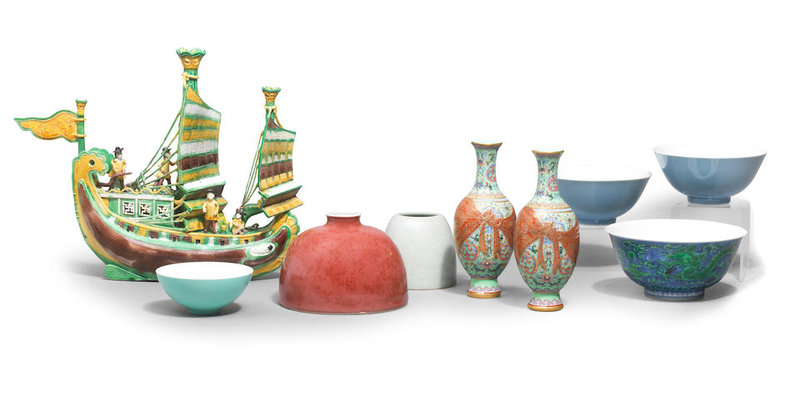
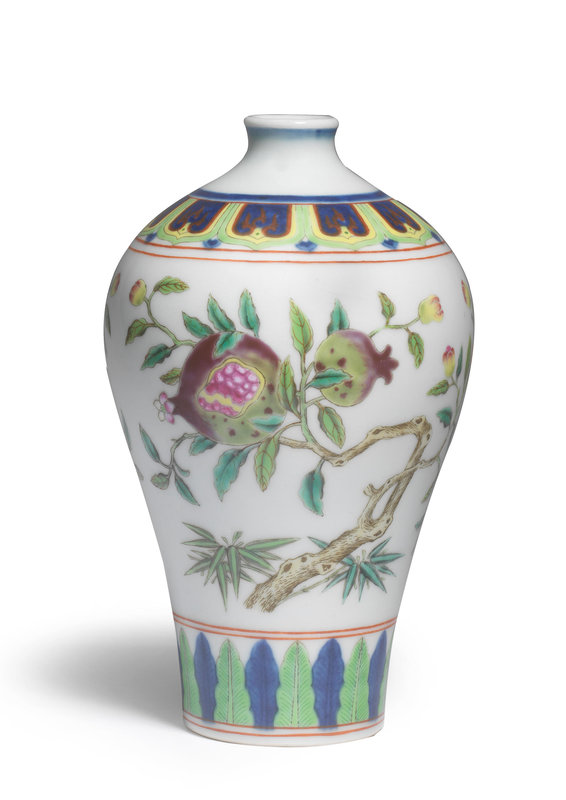
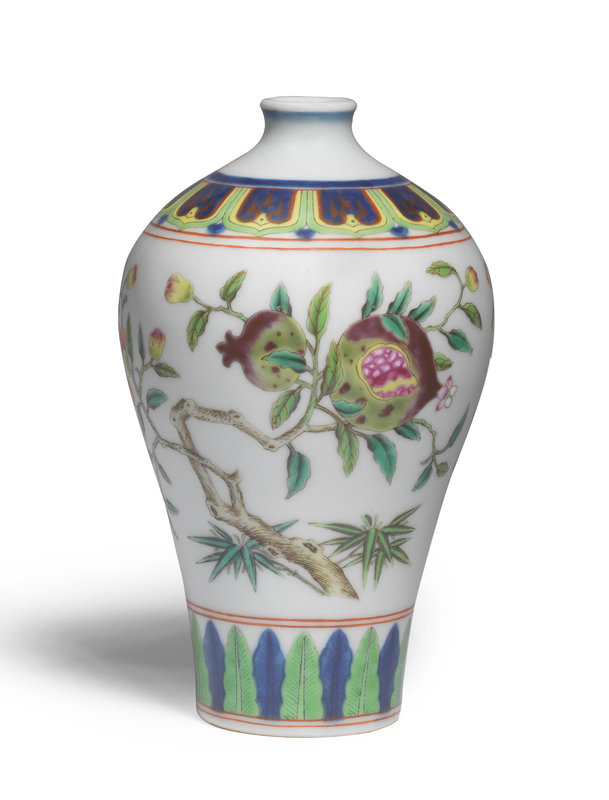
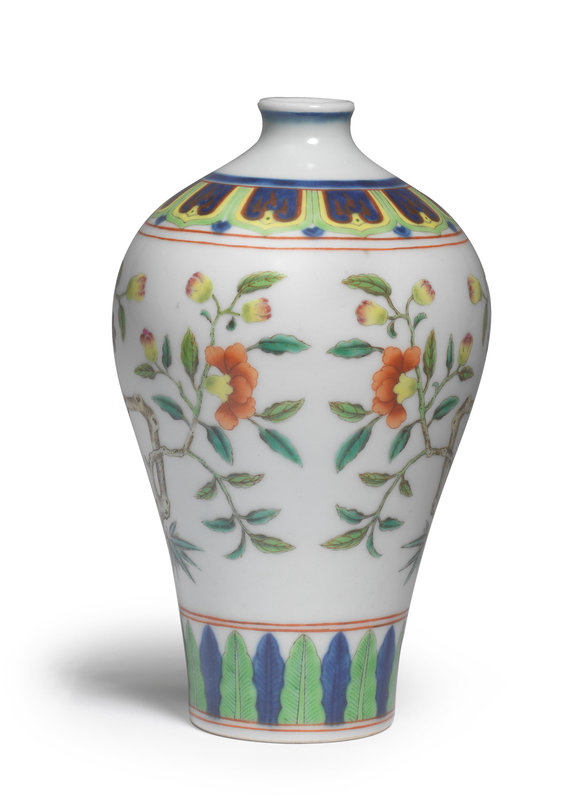







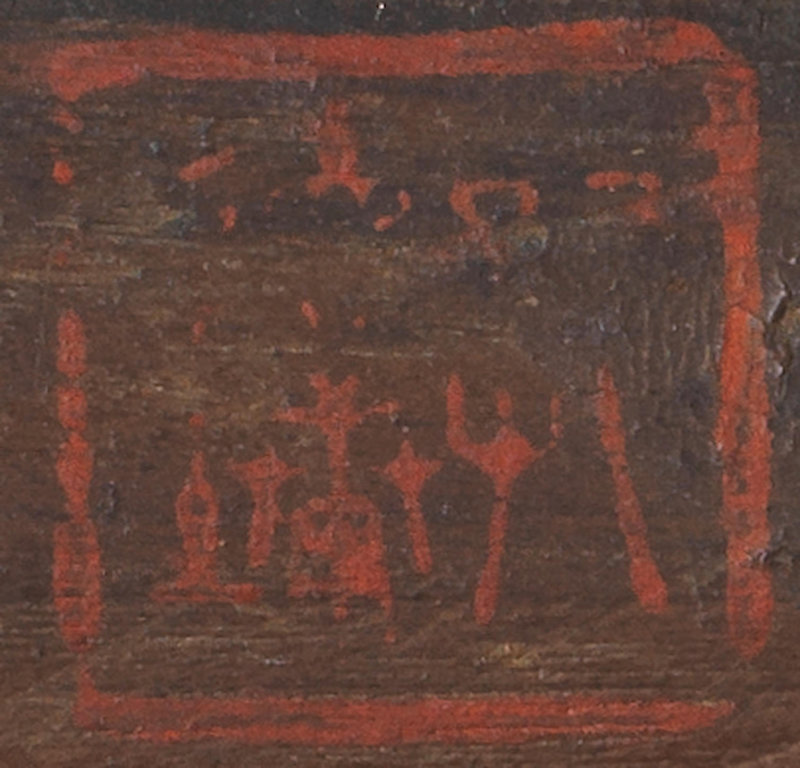

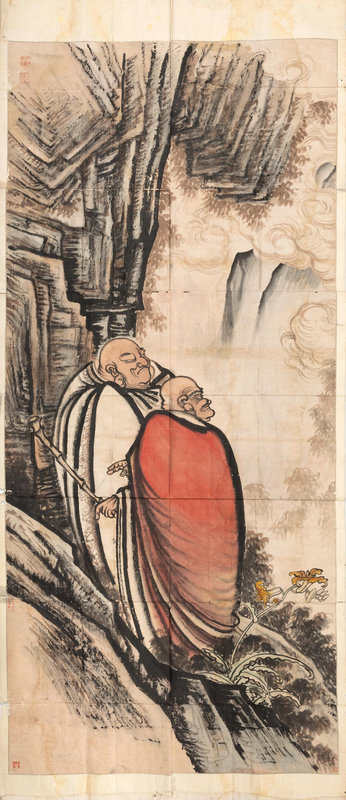
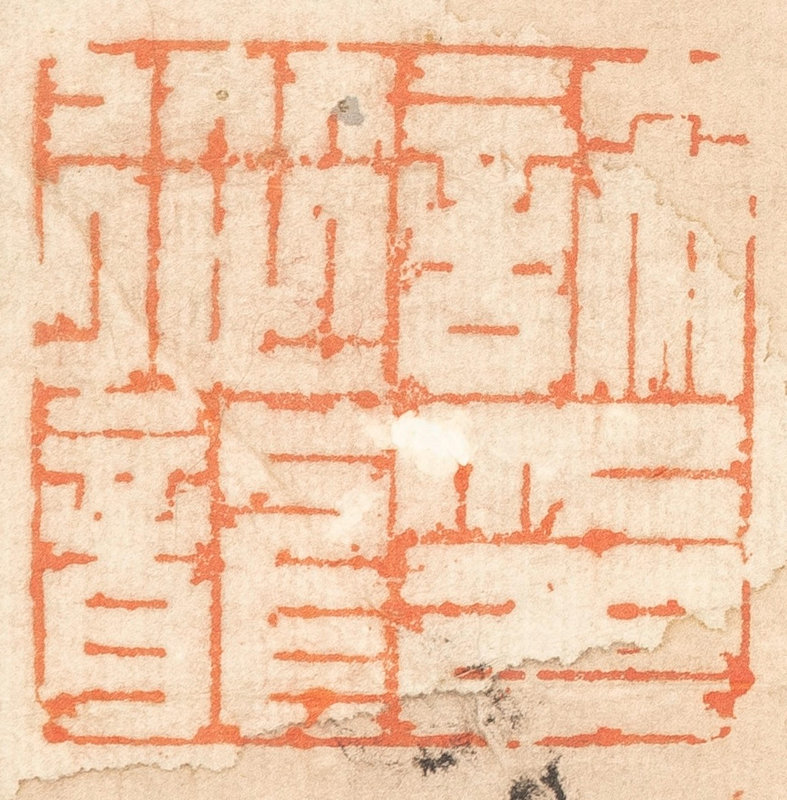

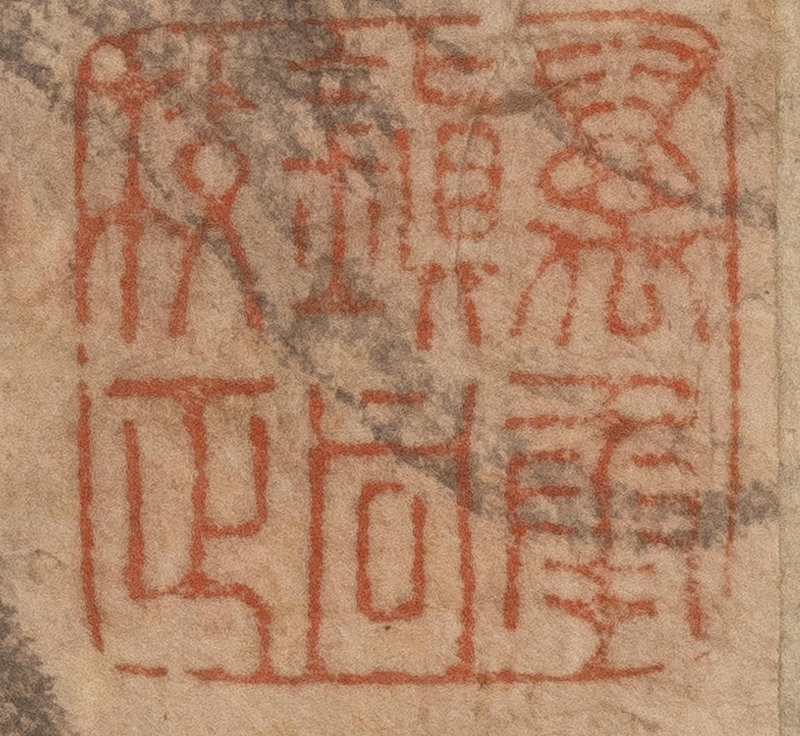
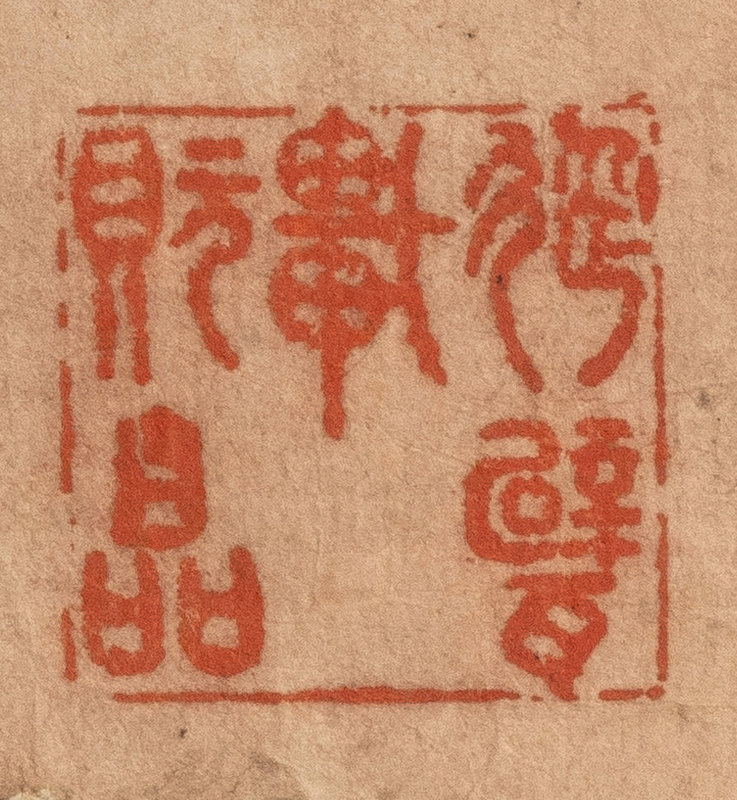
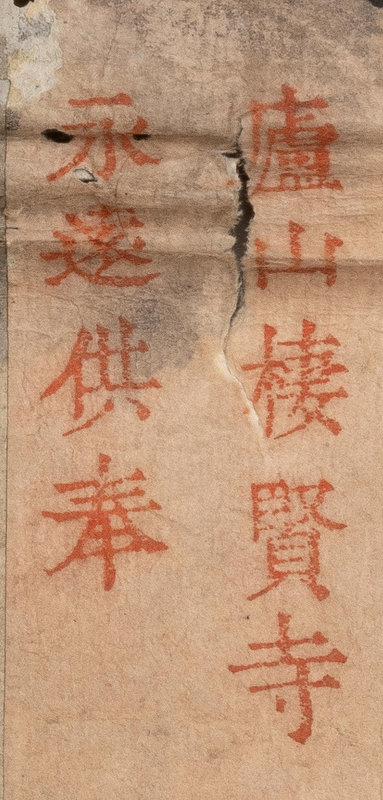
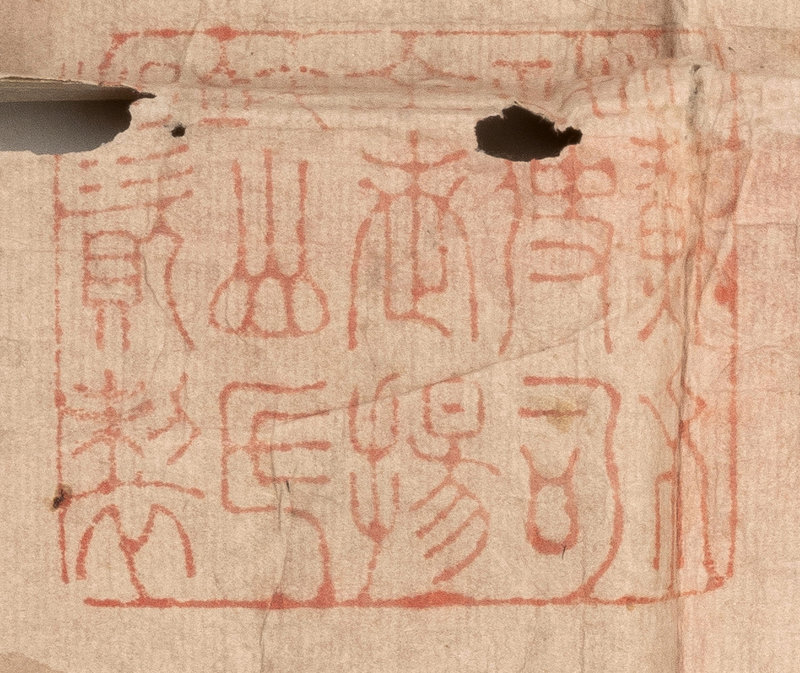
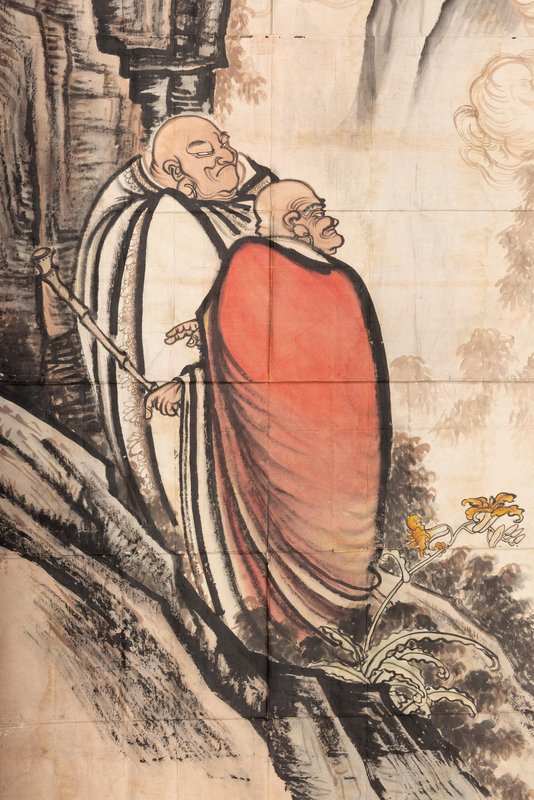
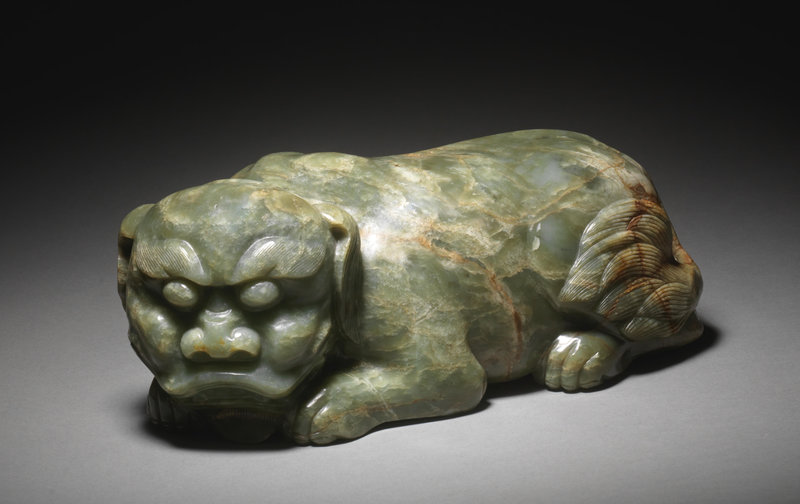
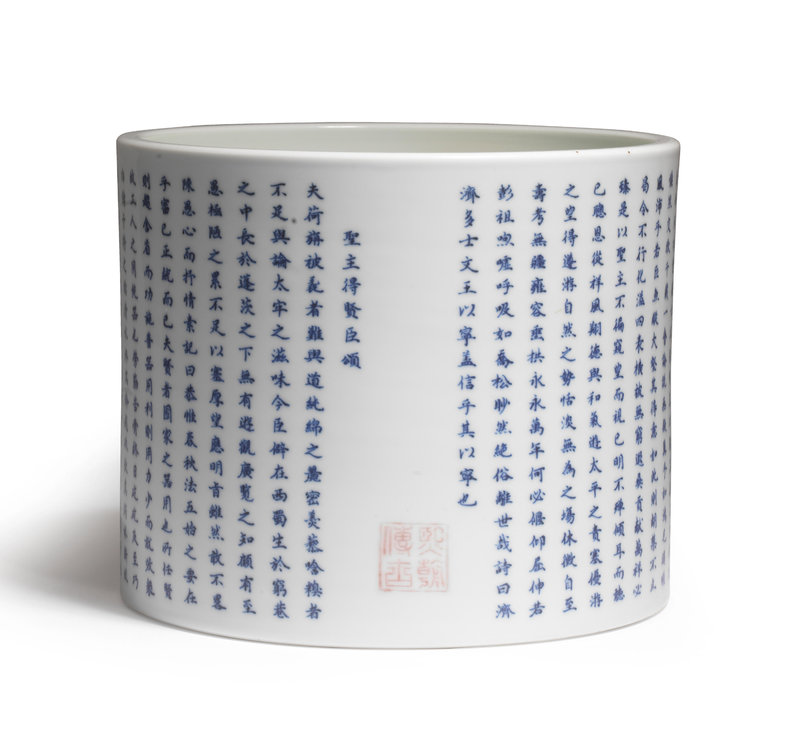

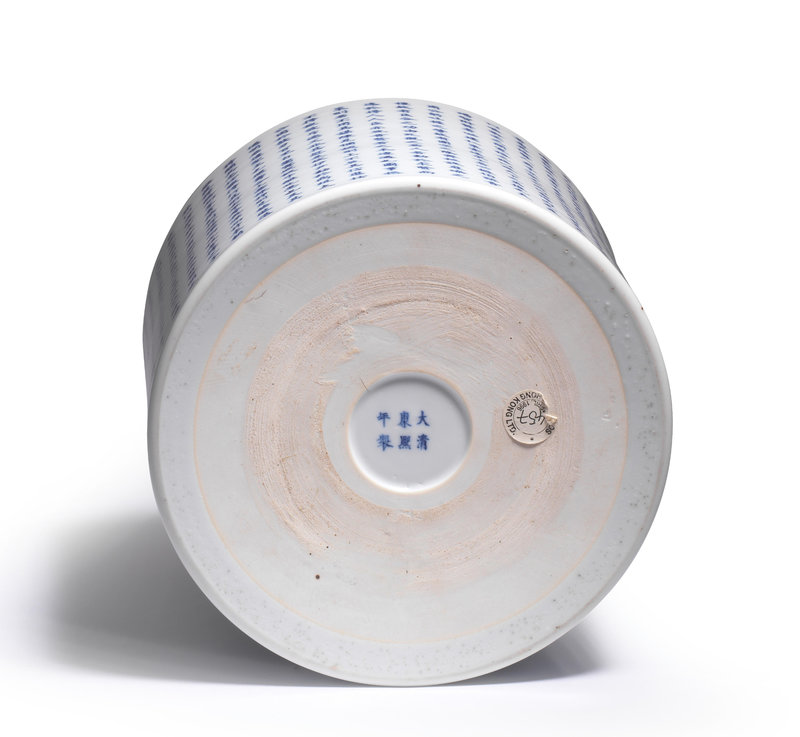
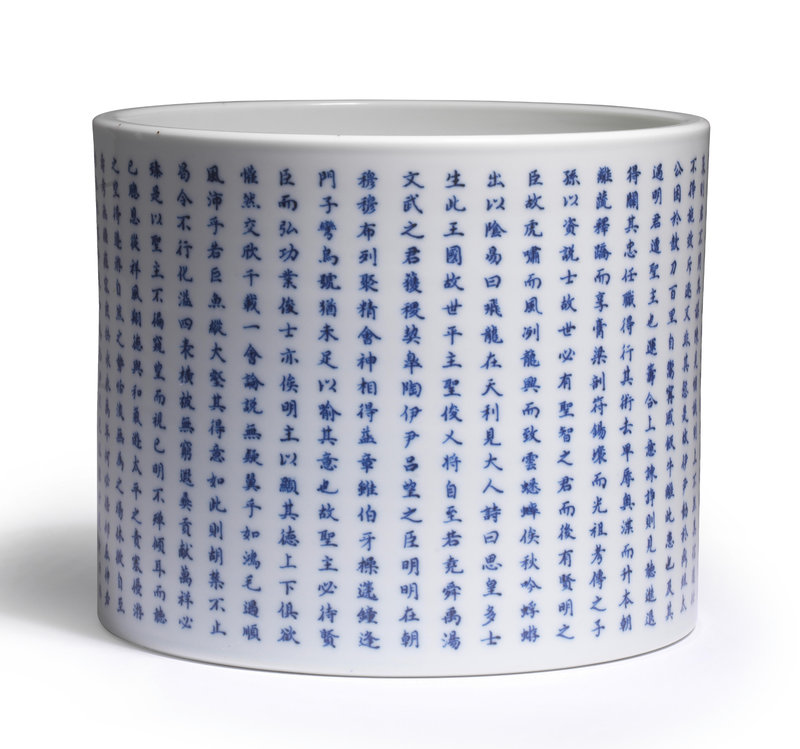
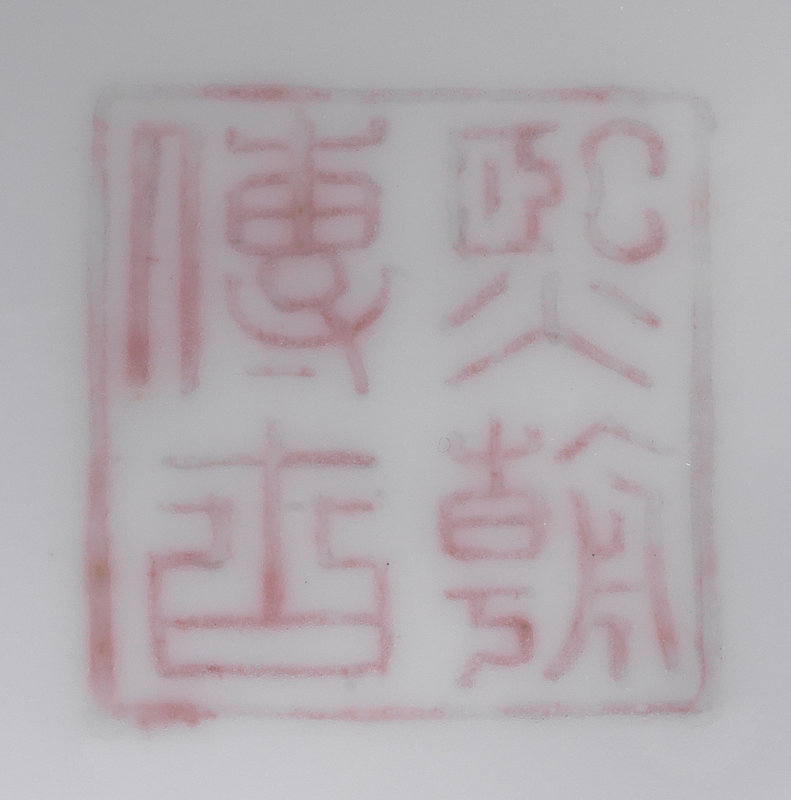
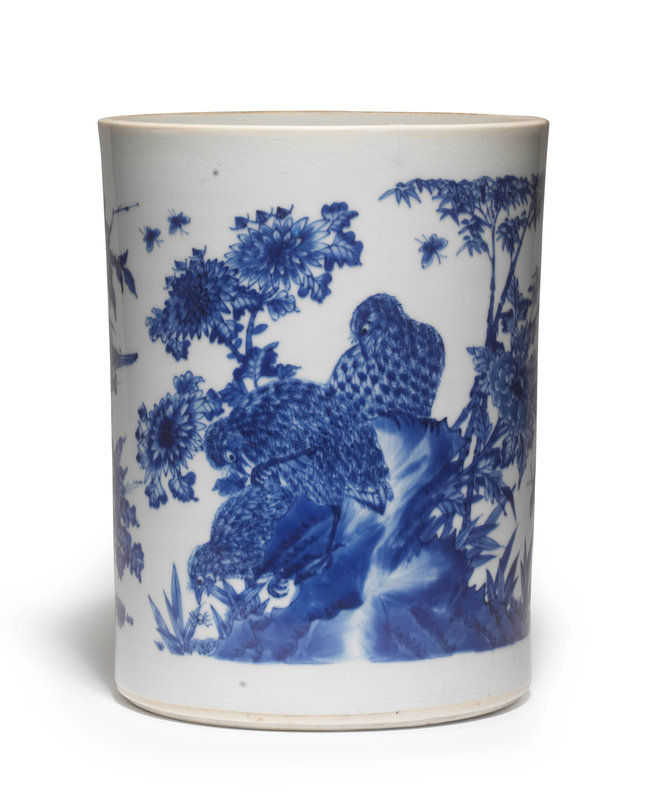
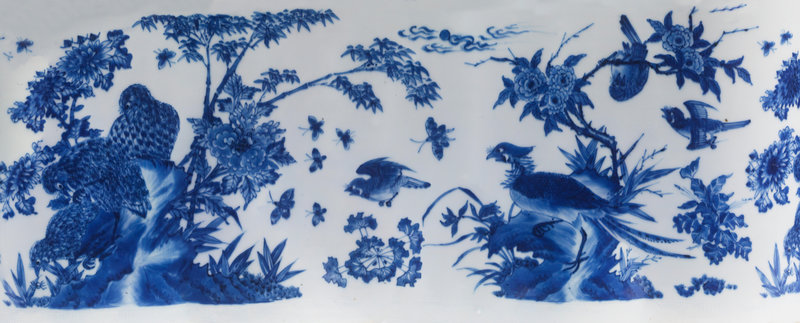
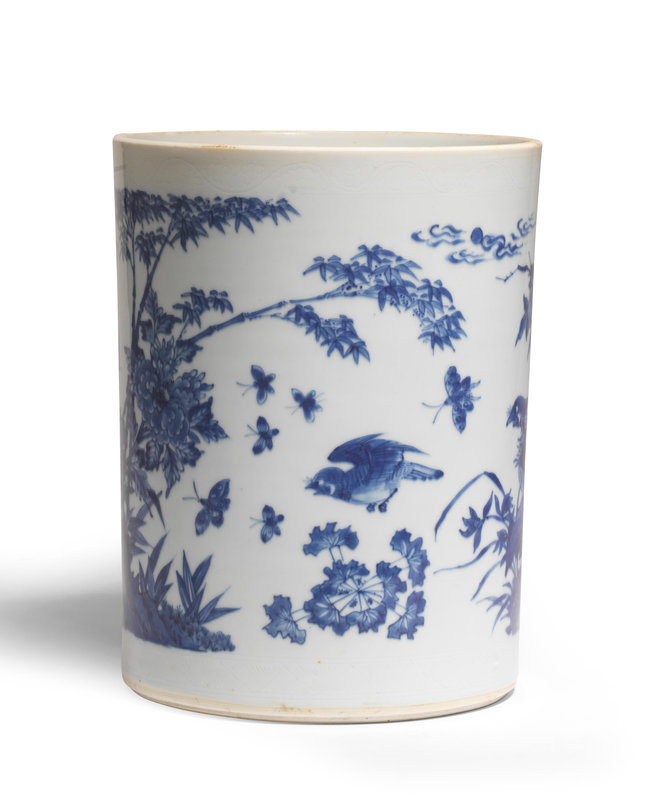


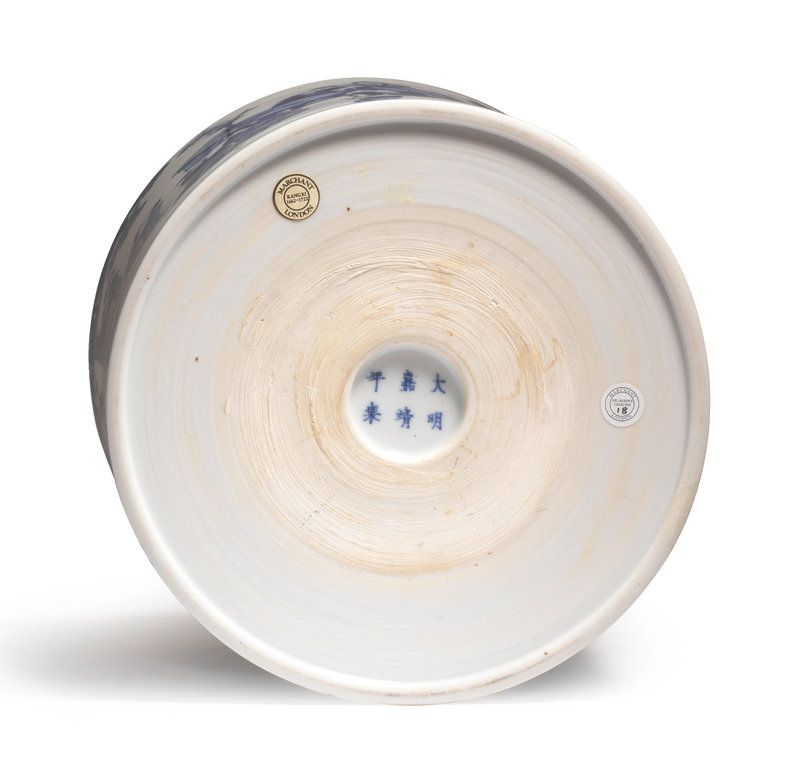
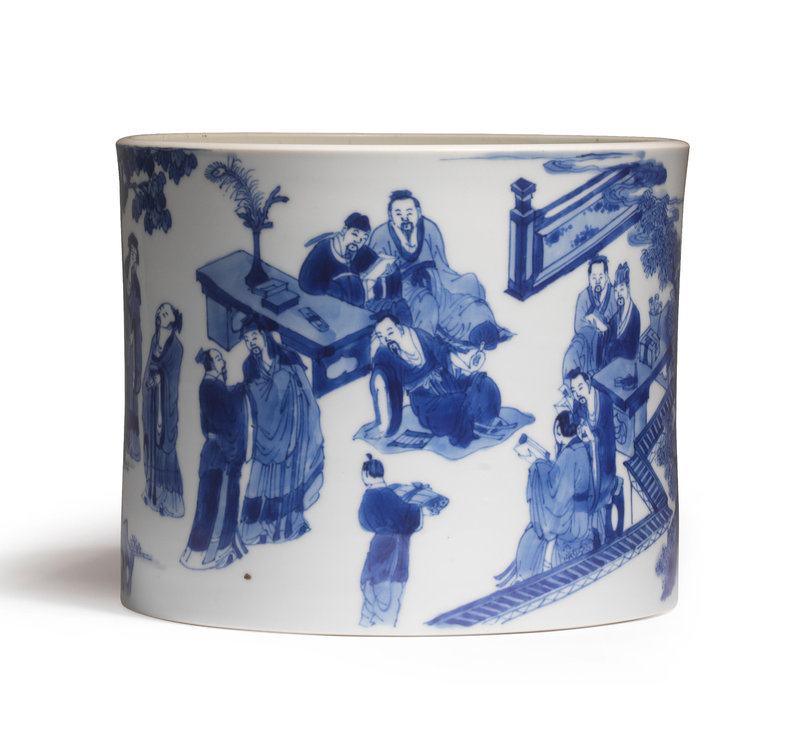
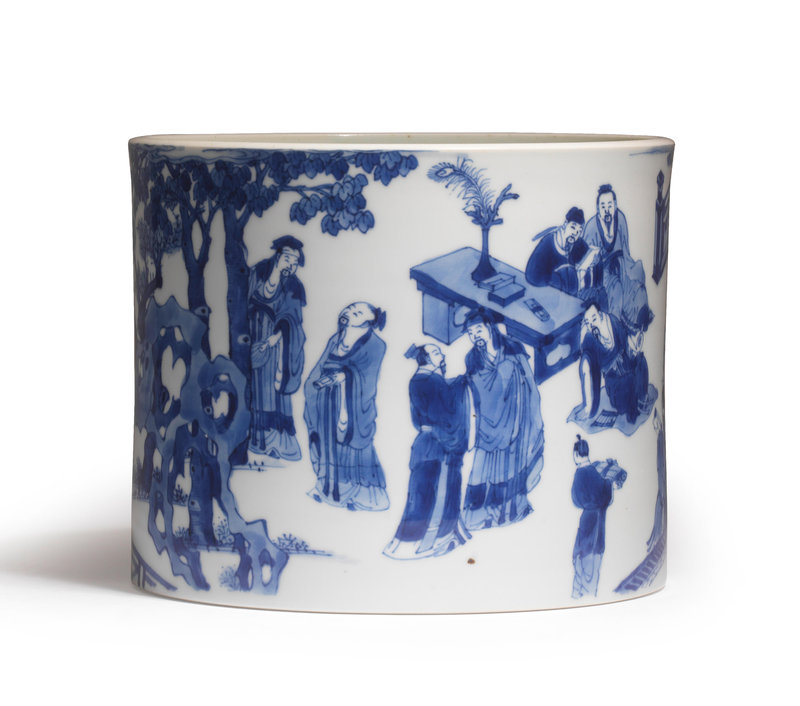
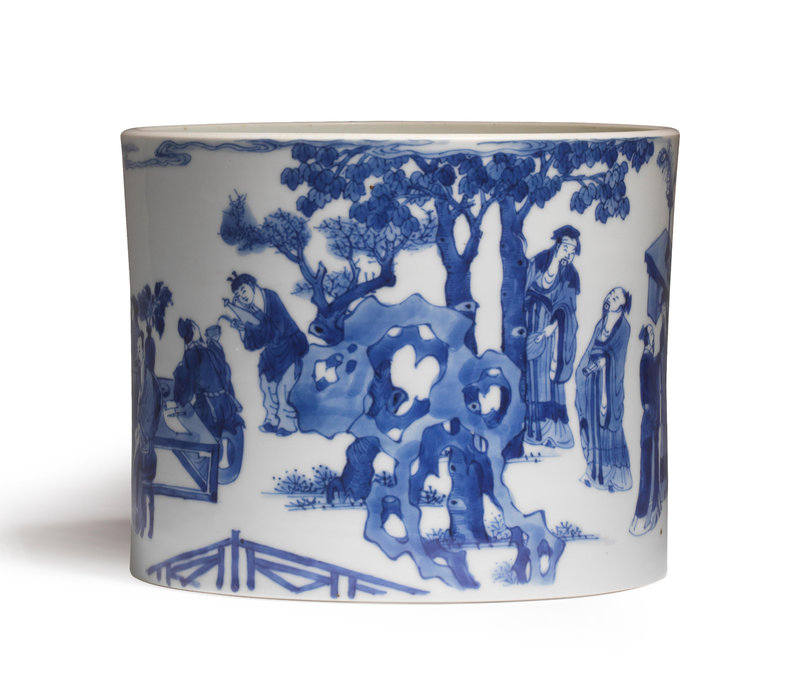
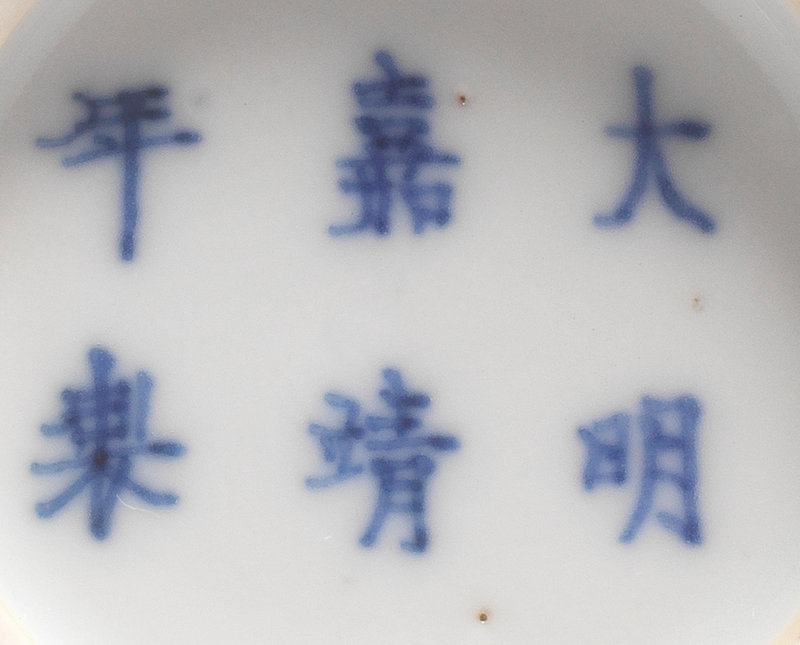
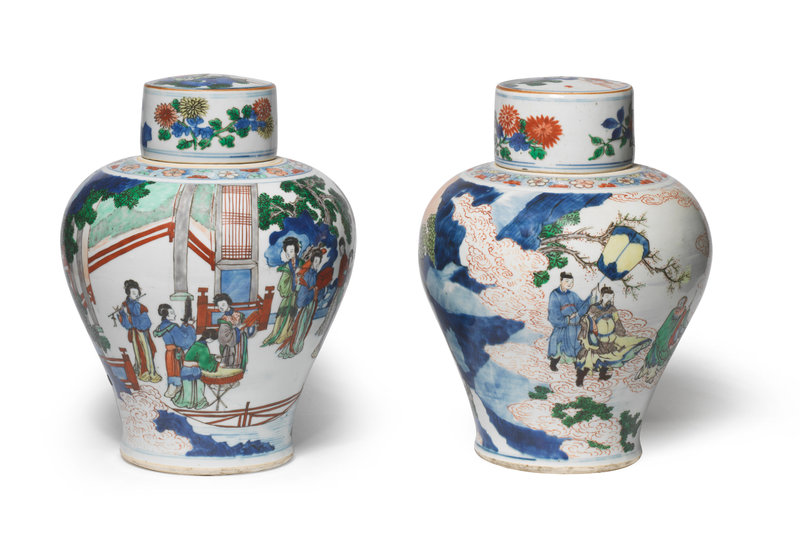
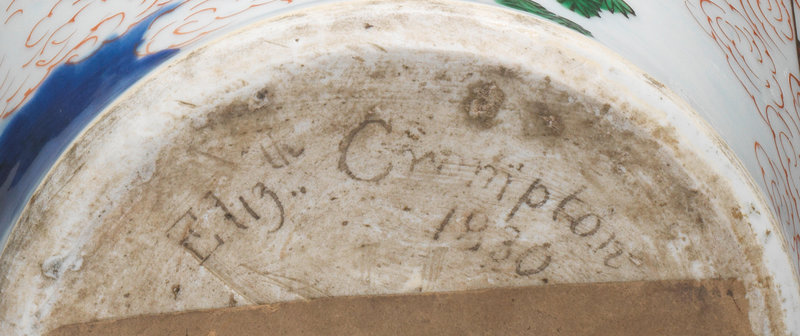
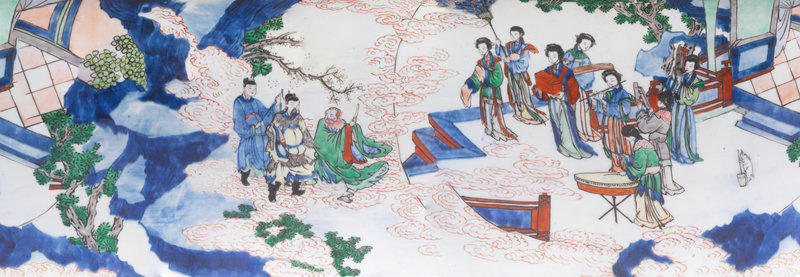
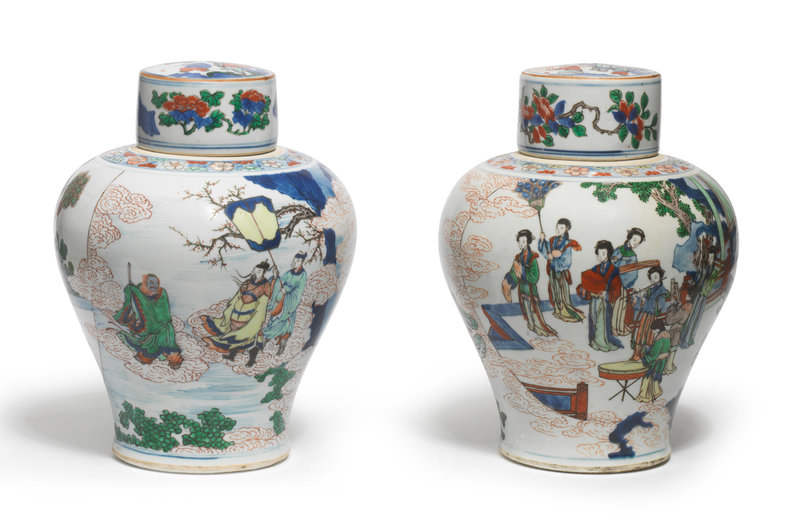
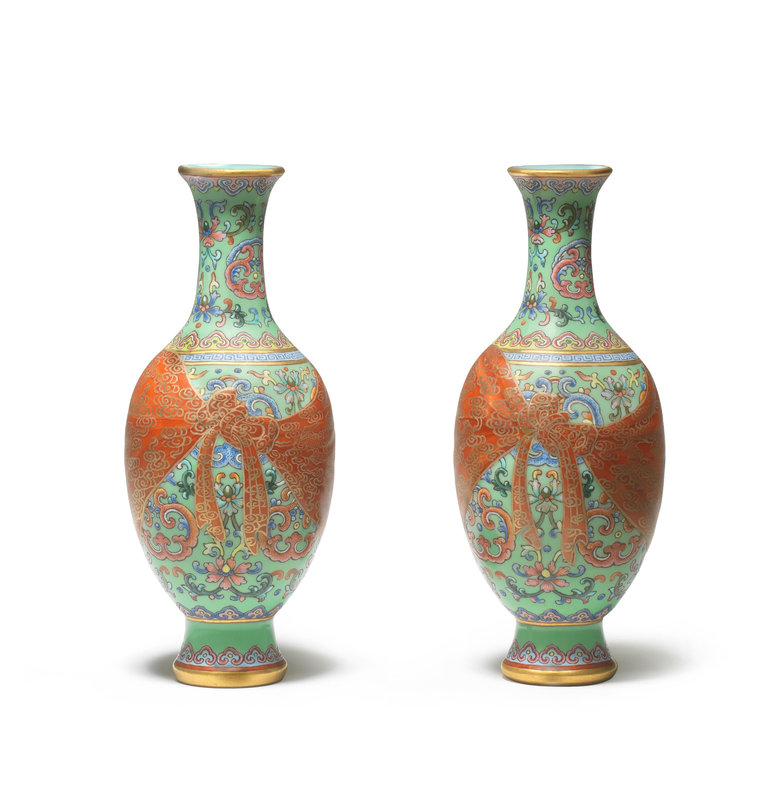

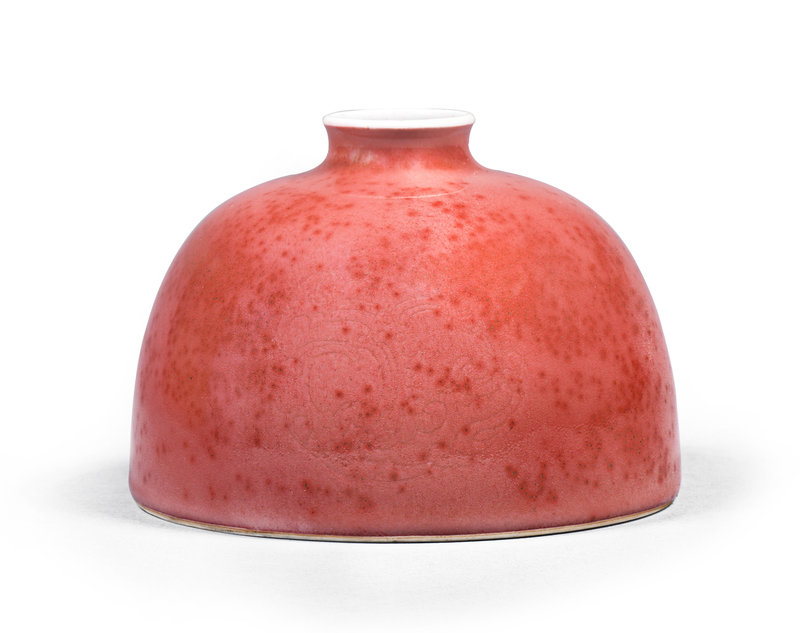
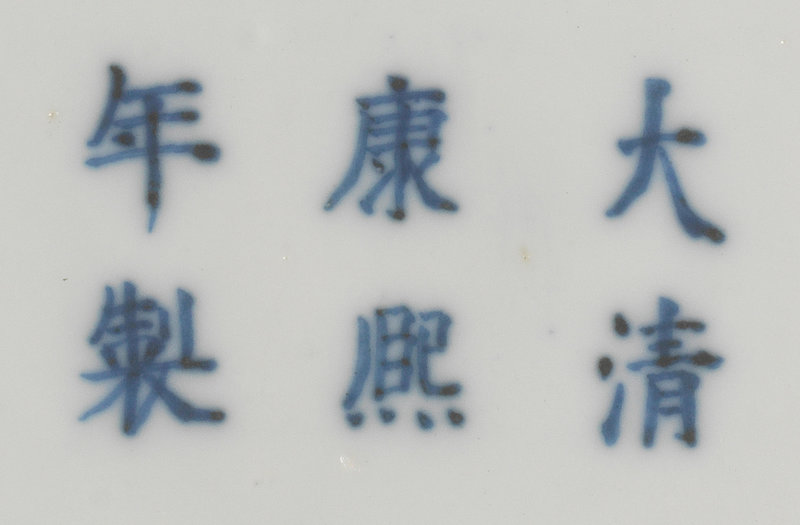

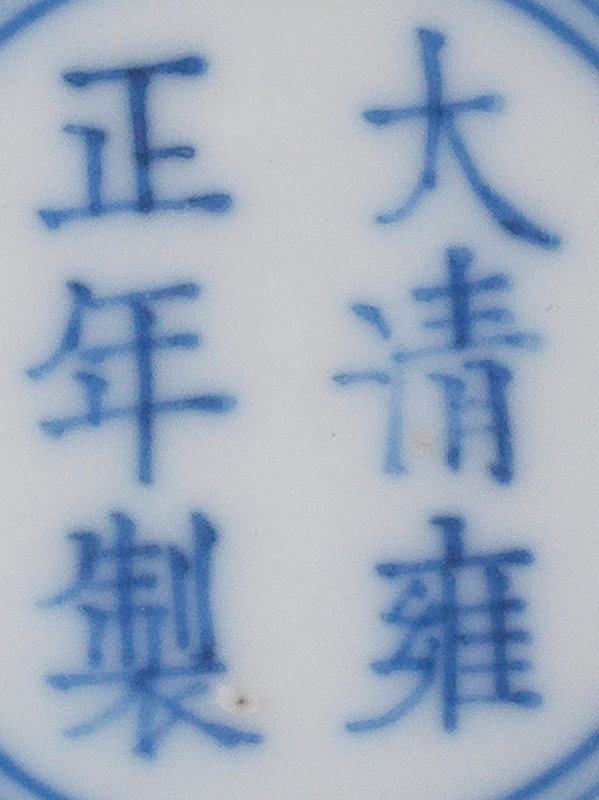
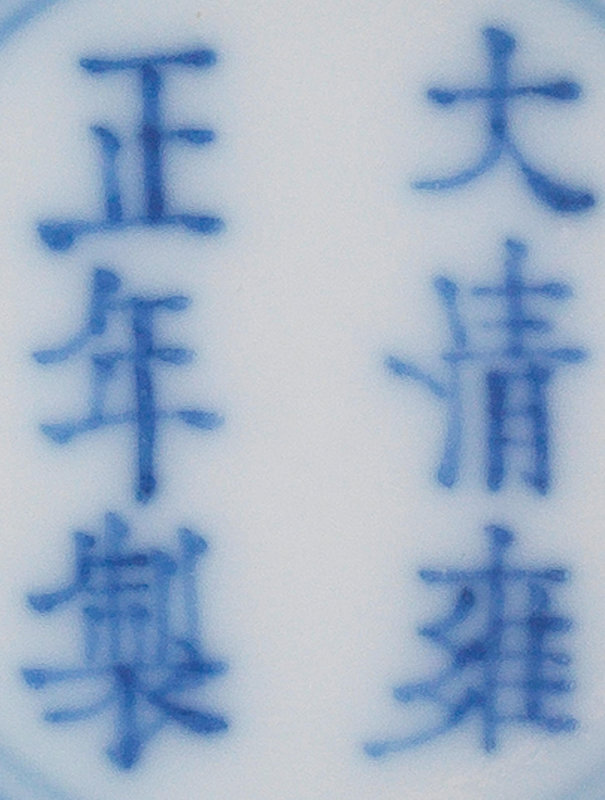
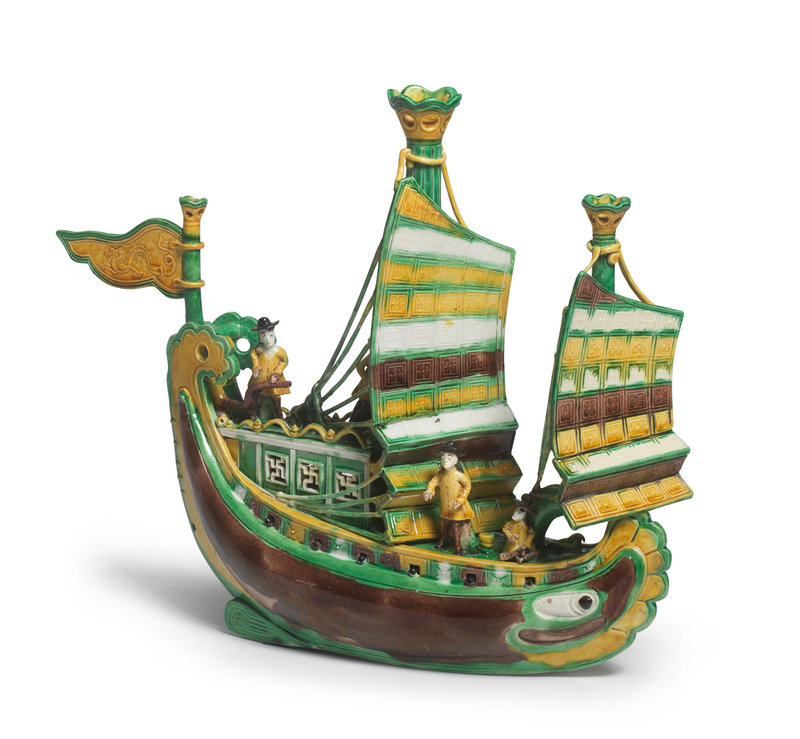
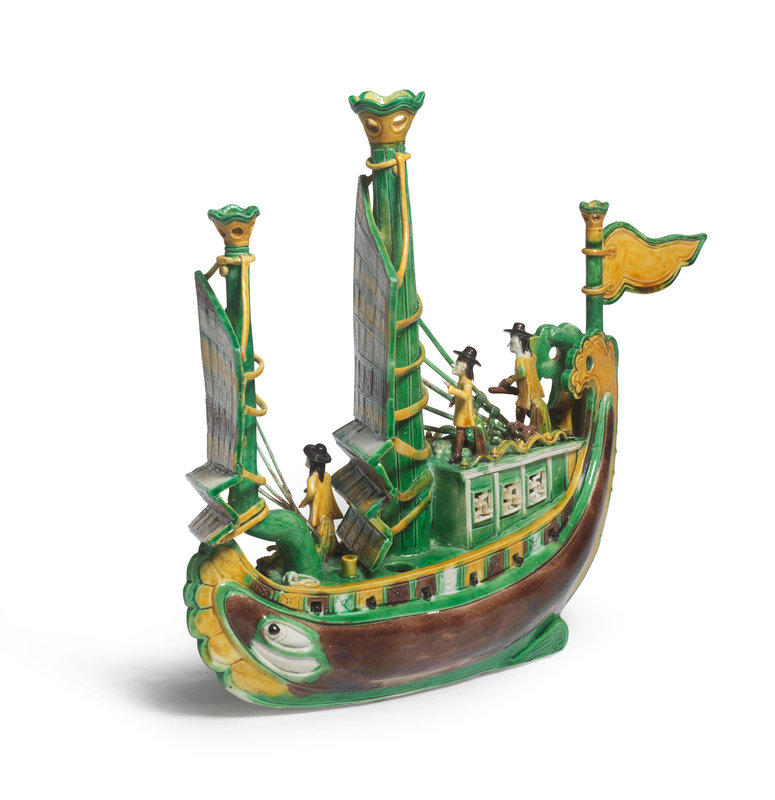
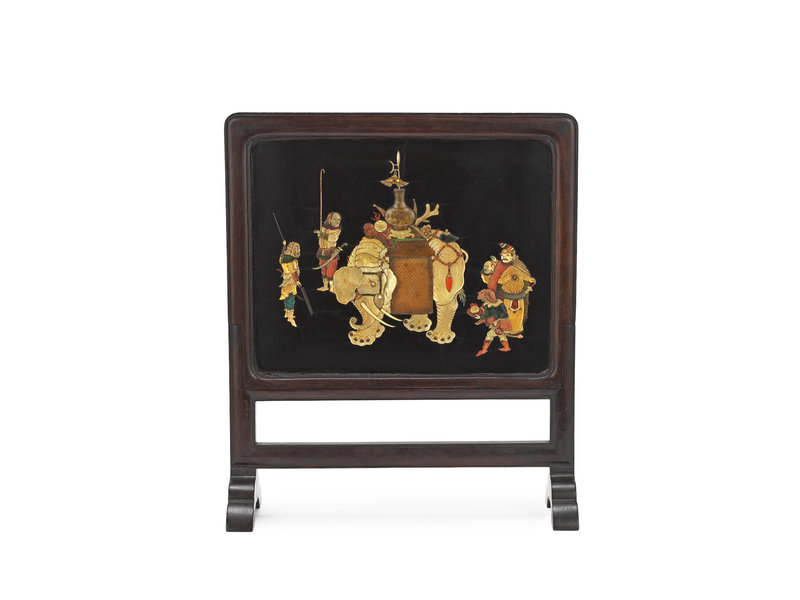
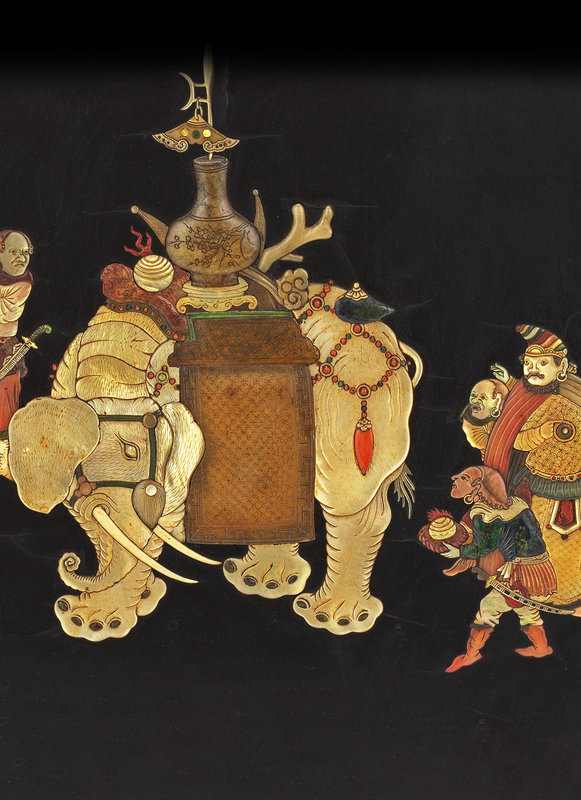
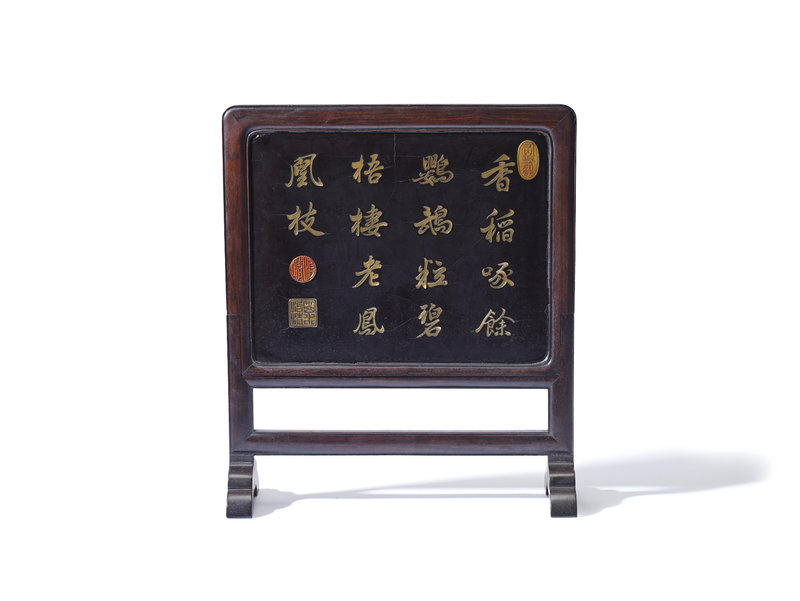
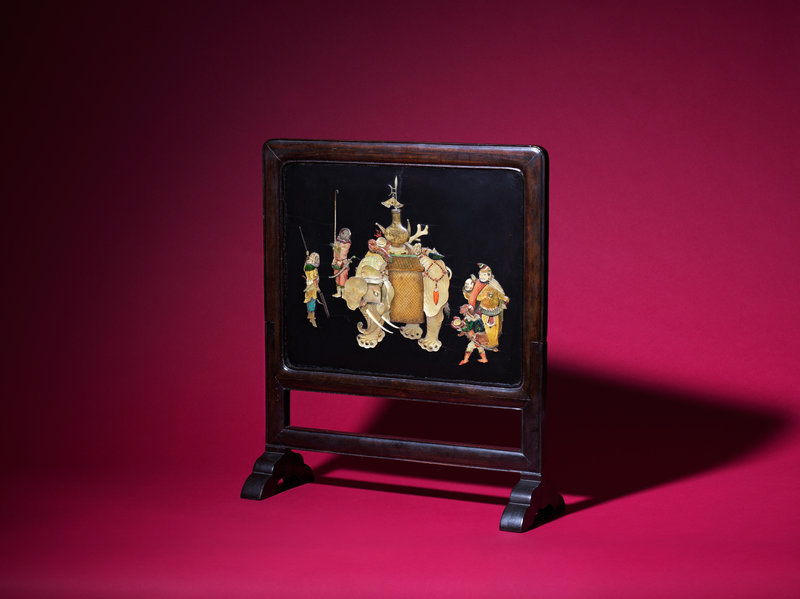
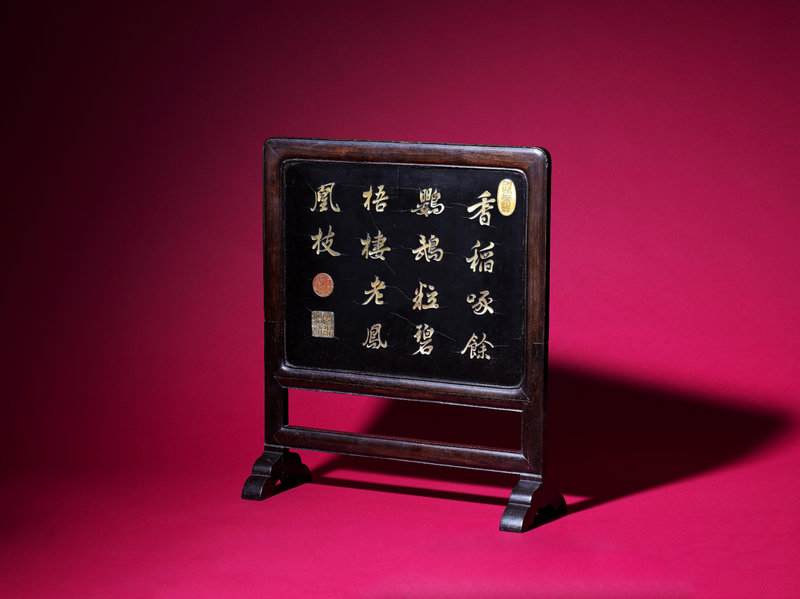
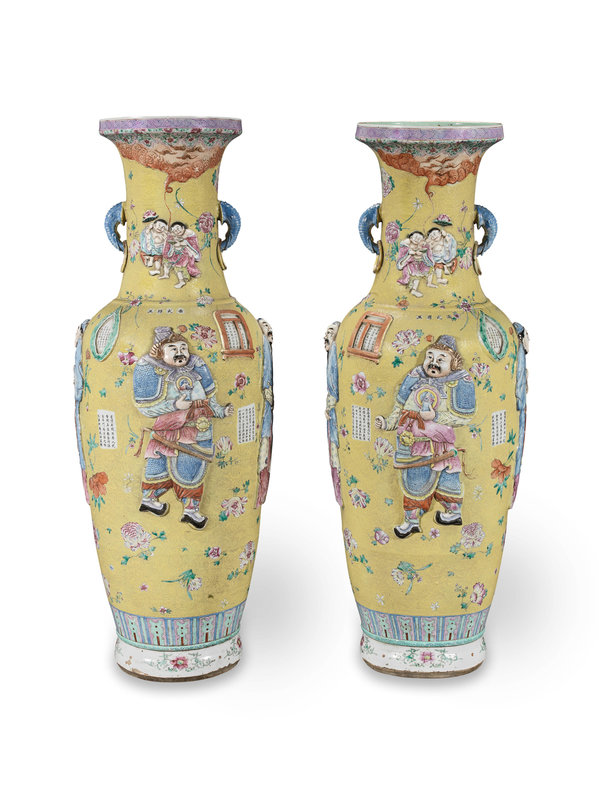
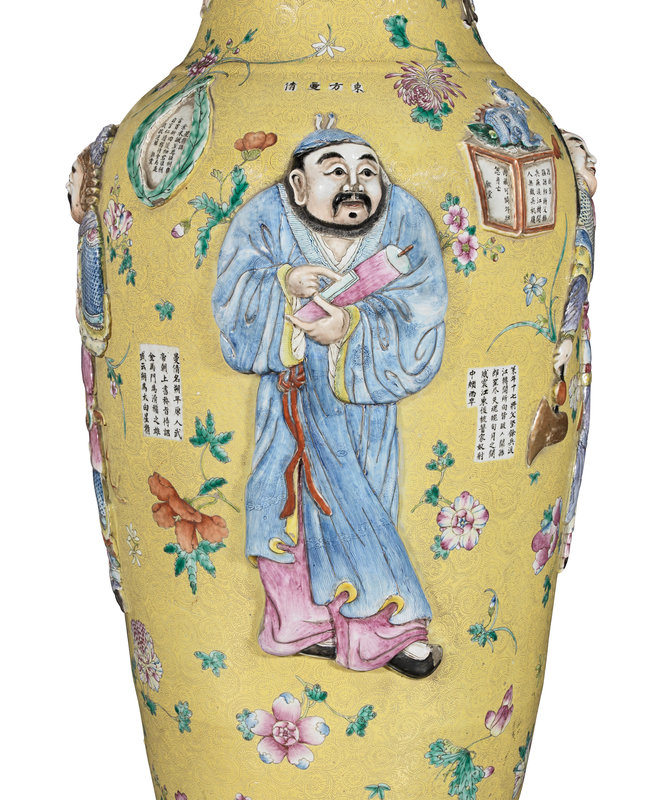
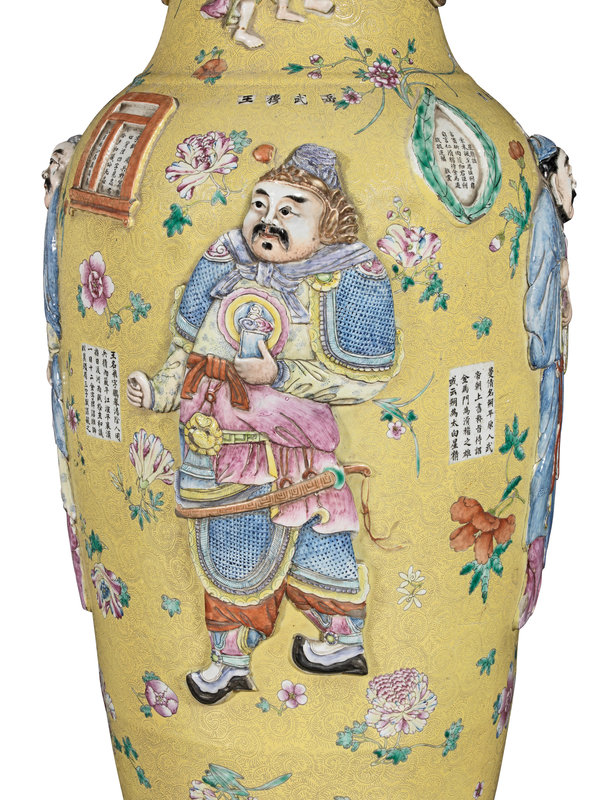
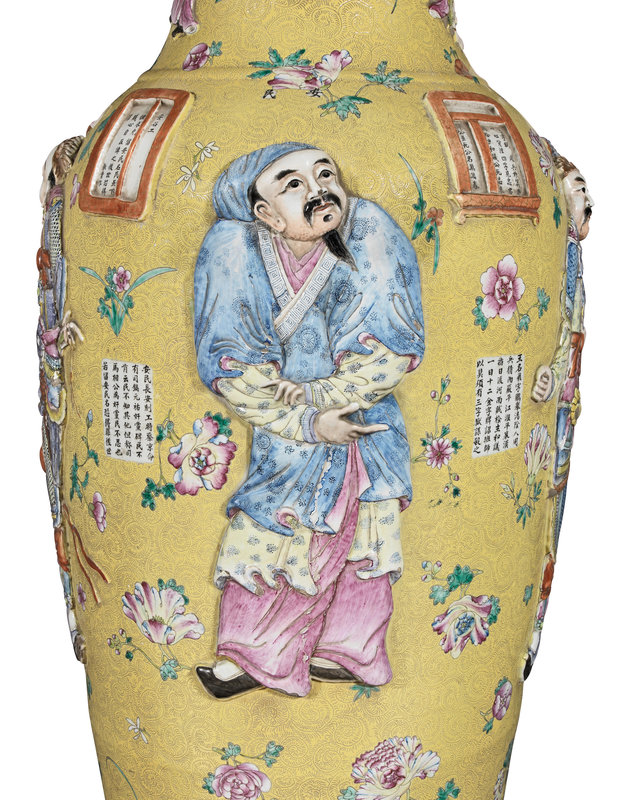
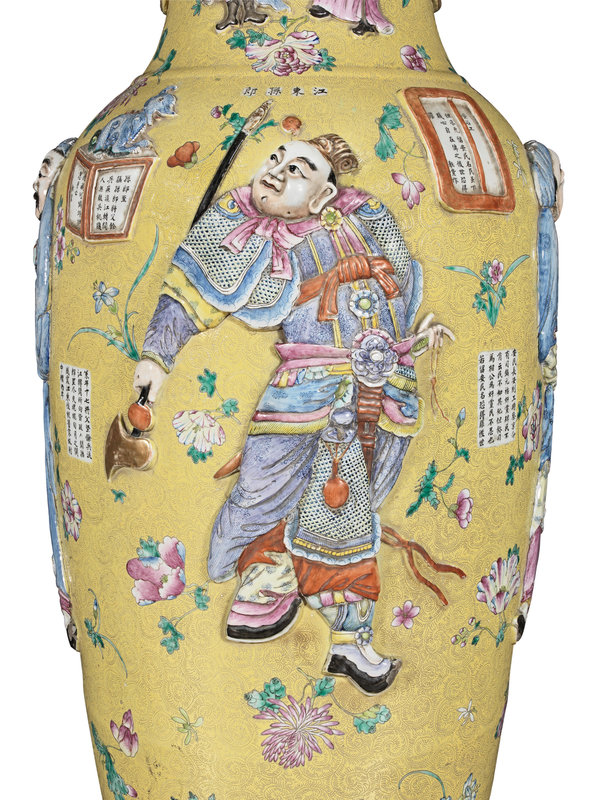
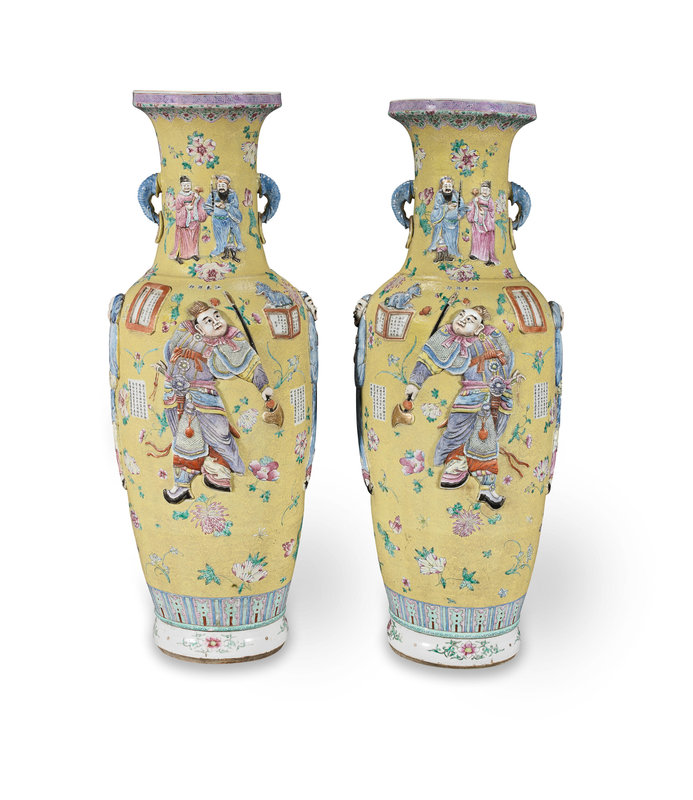


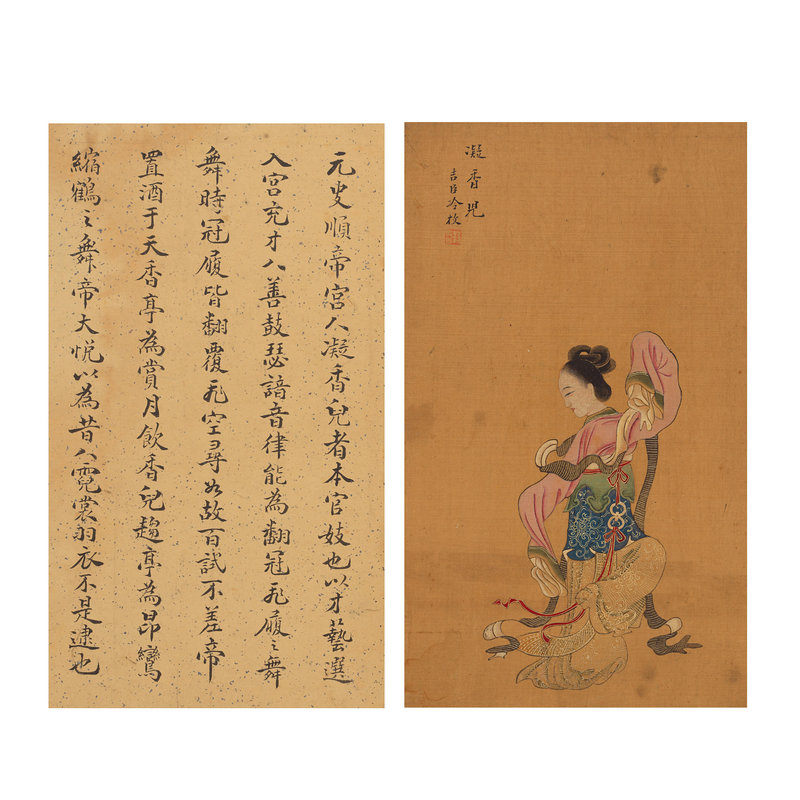
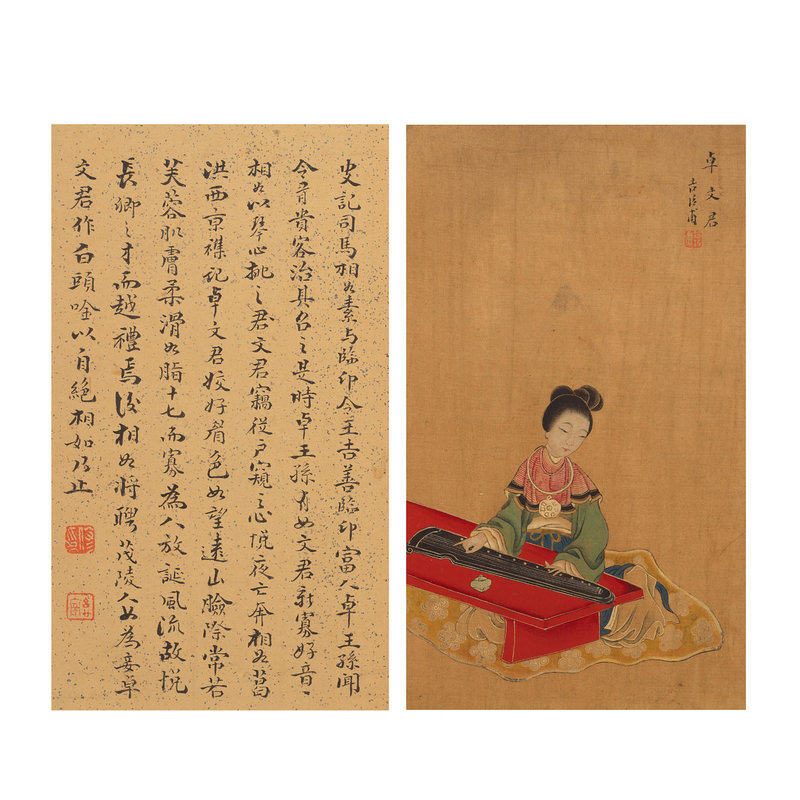
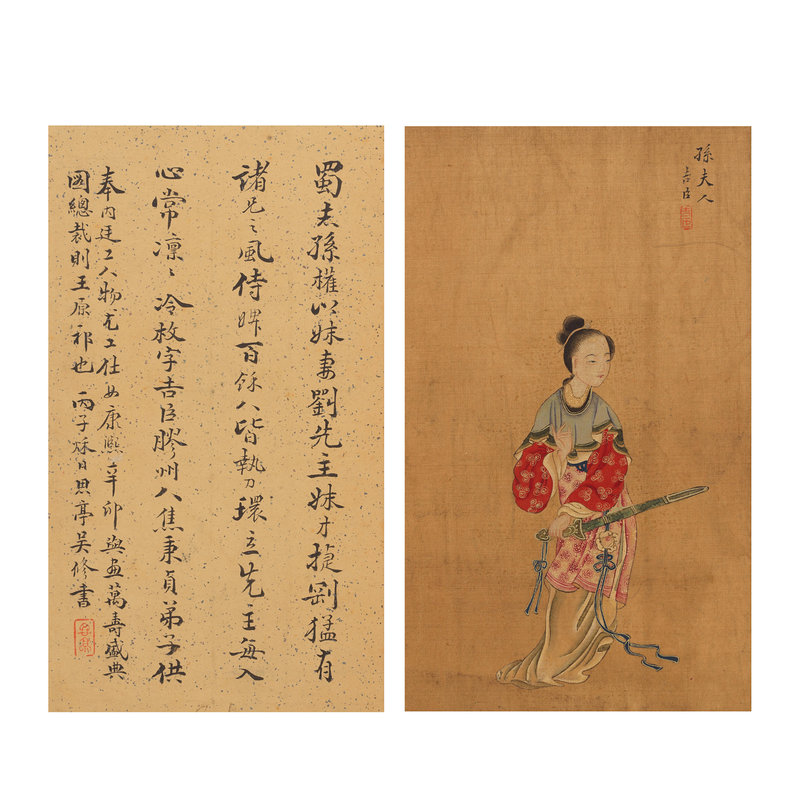



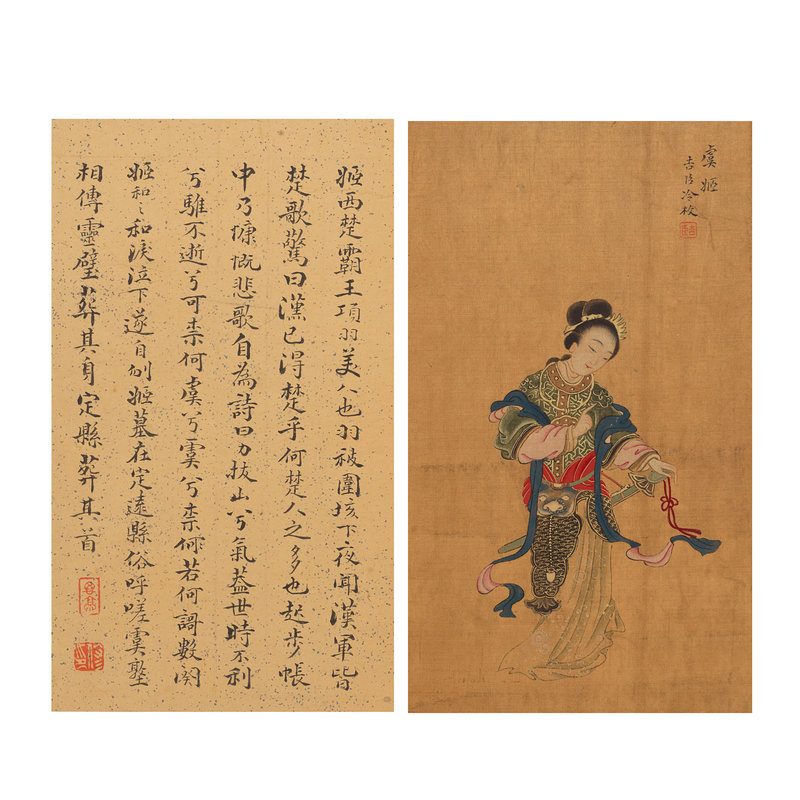
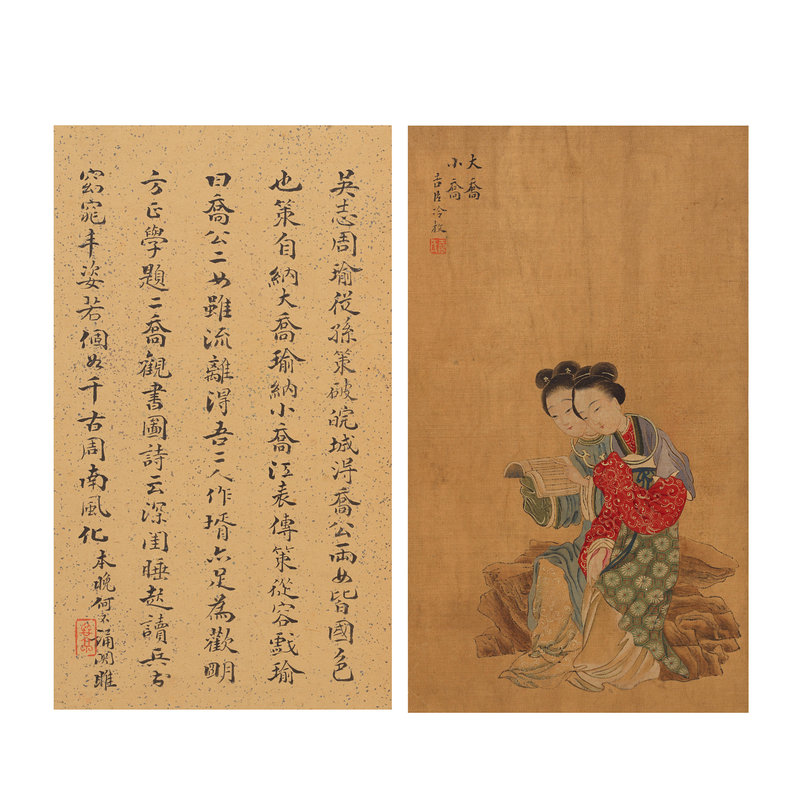
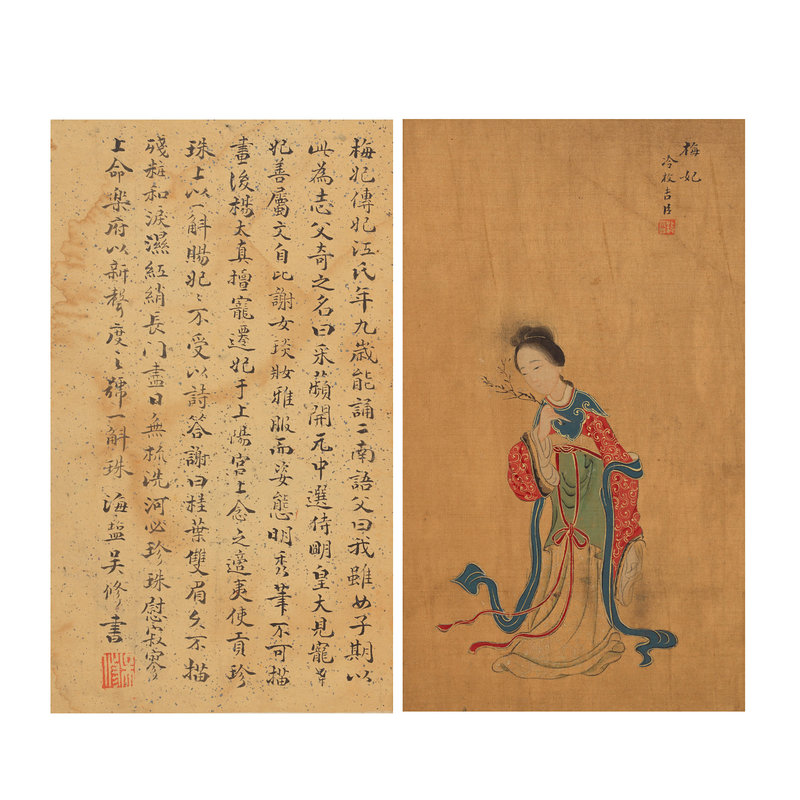
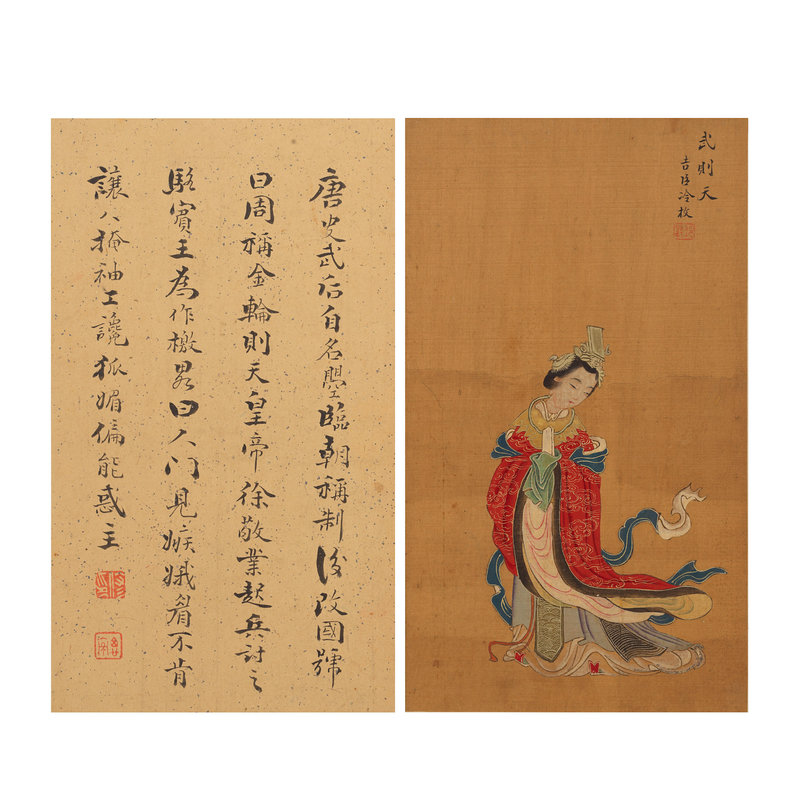
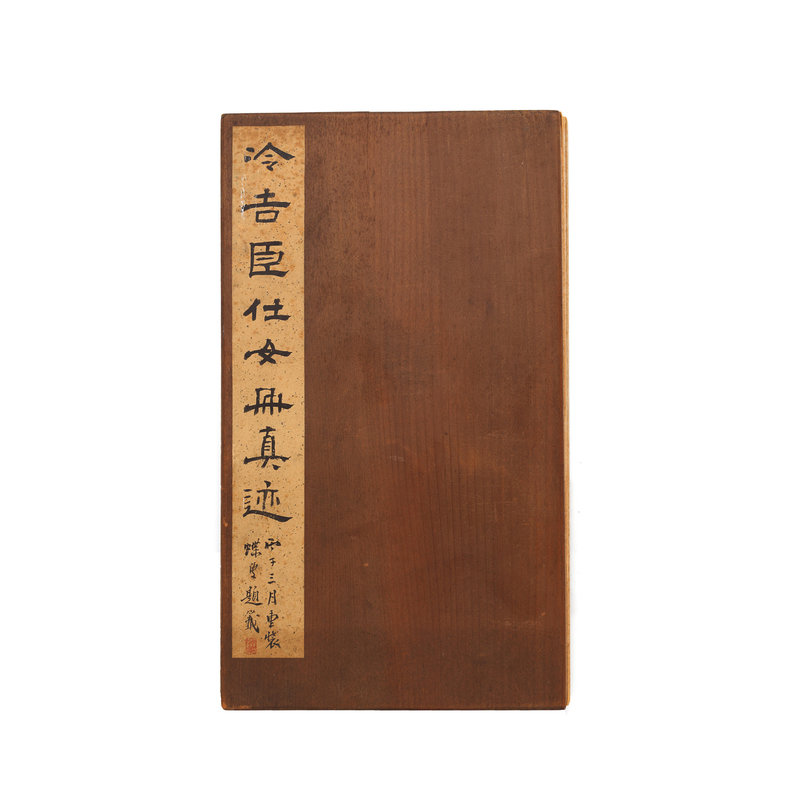


/image%2F1371349%2F20240512%2Fob_734fc0_telechargement-11.jpg)
/image%2F1371349%2F20240329%2Fob_17ee91_115-1.jpg)
/image%2F1371349%2F20240323%2Fob_65a2da_434238029-1637329100370436-25280776982.jpg)
/http%3A%2F%2Fstorage.canalblog.com%2F69%2F46%2F119589%2F129423593_o.jpg)